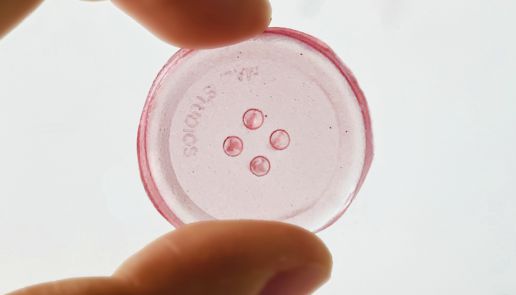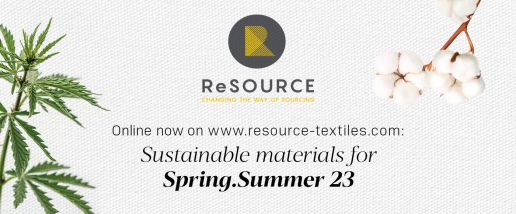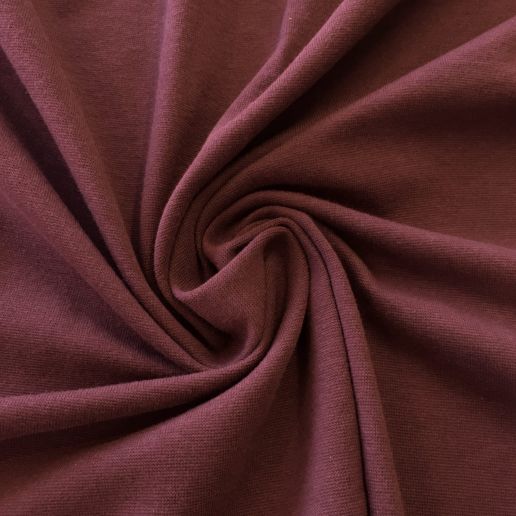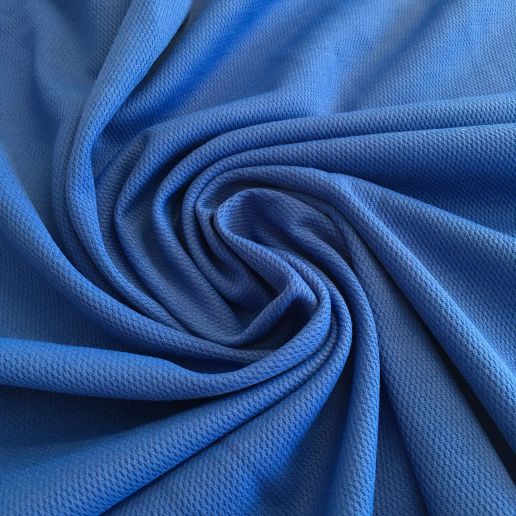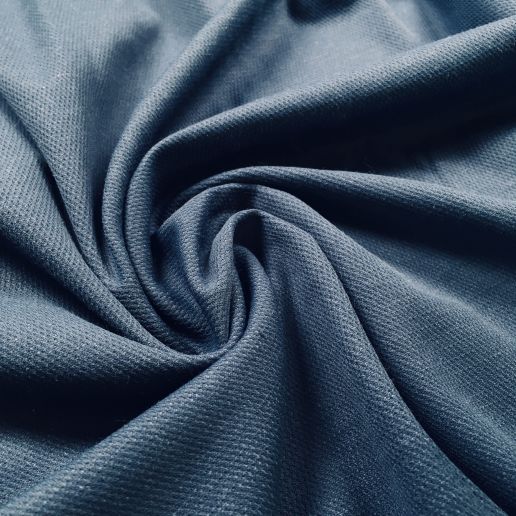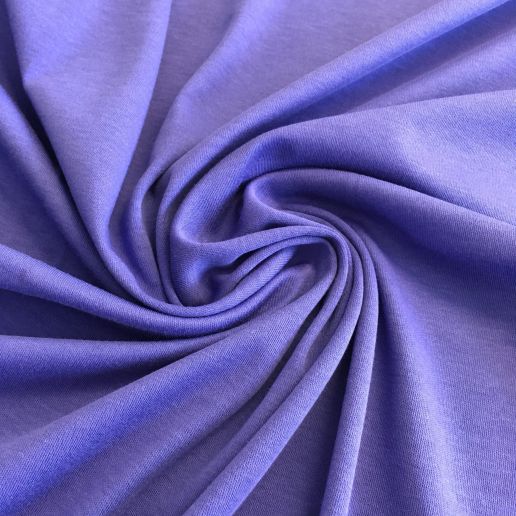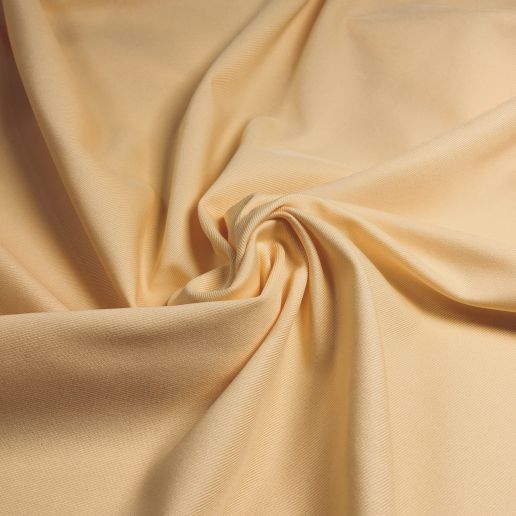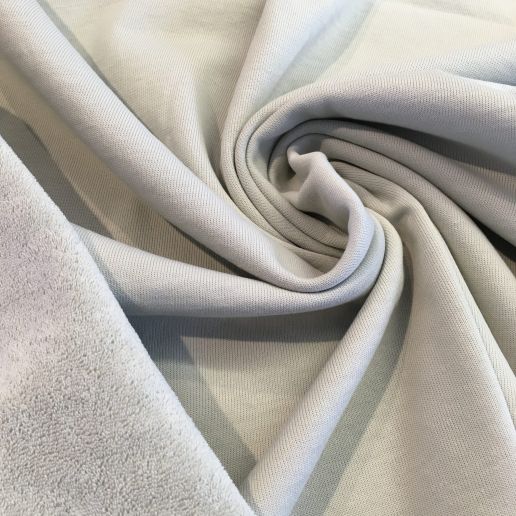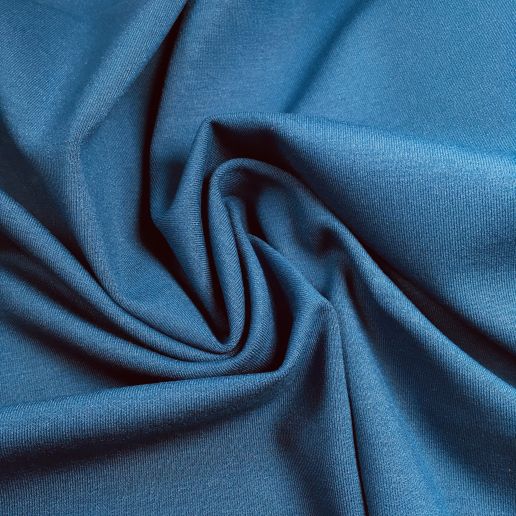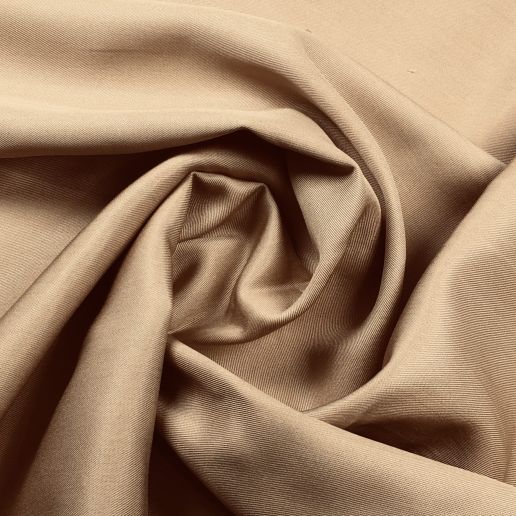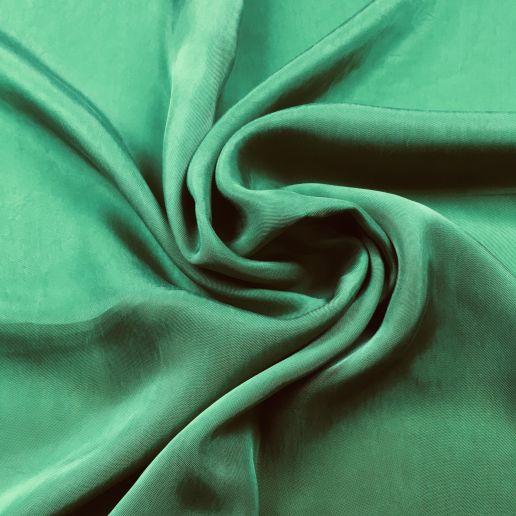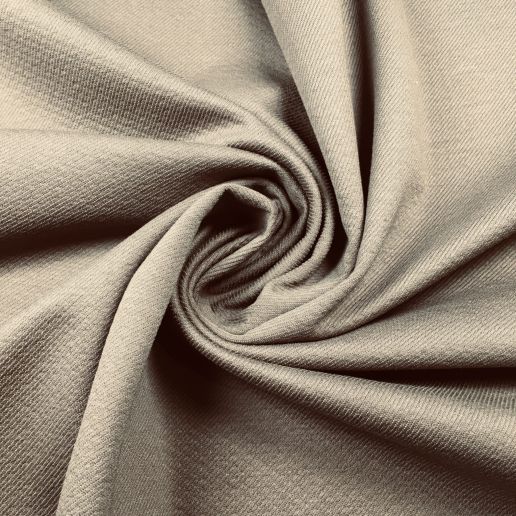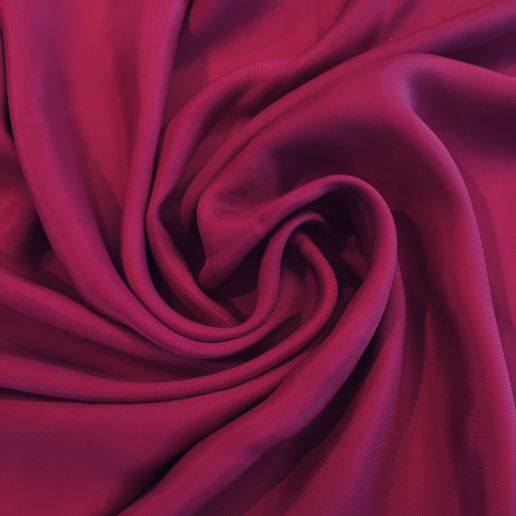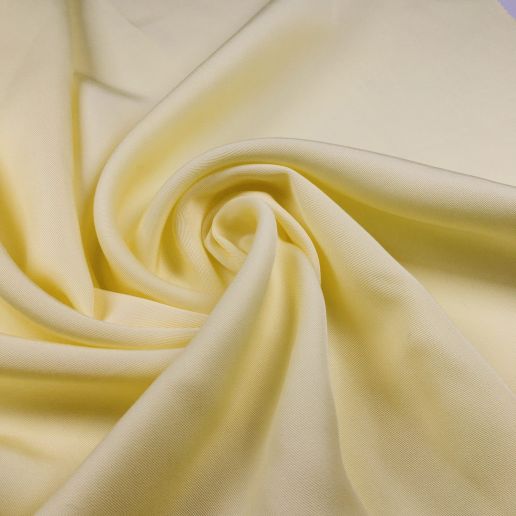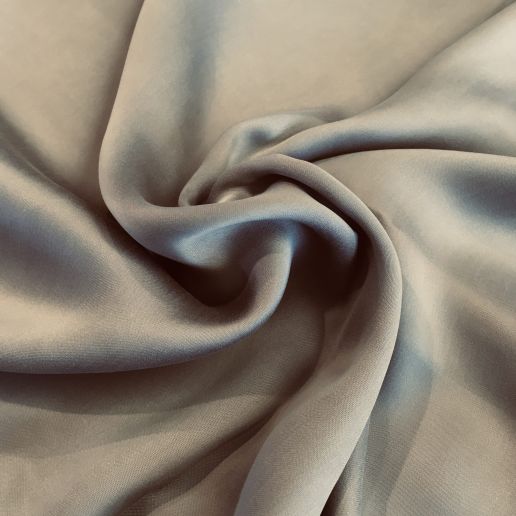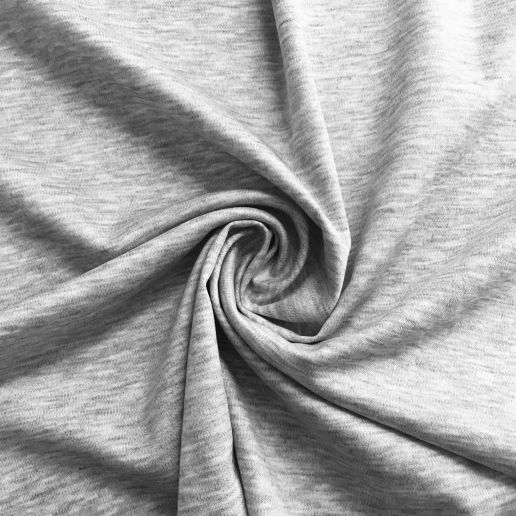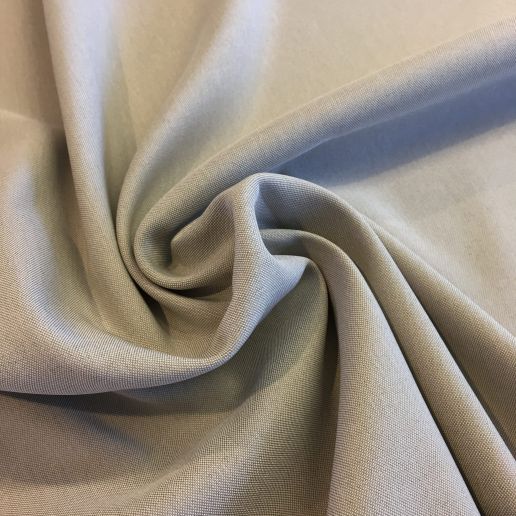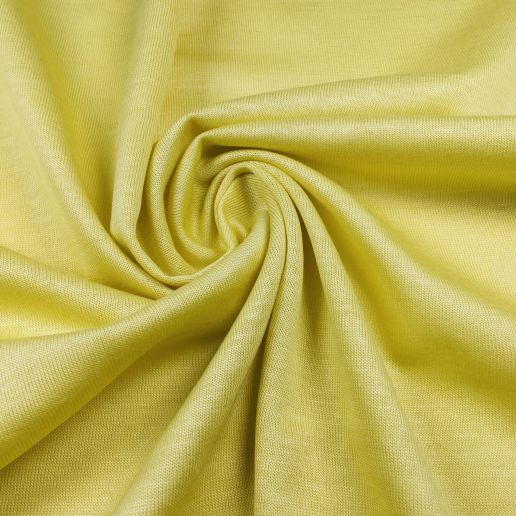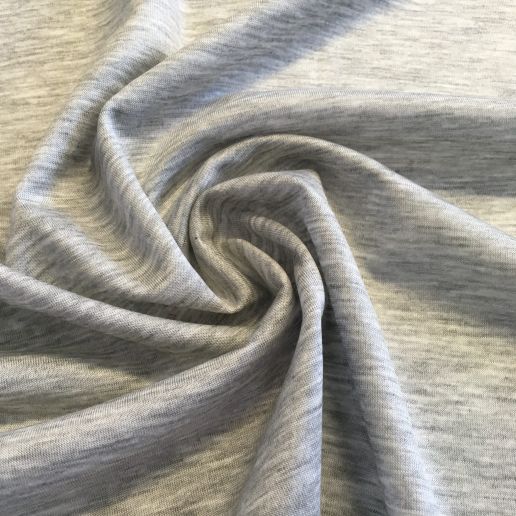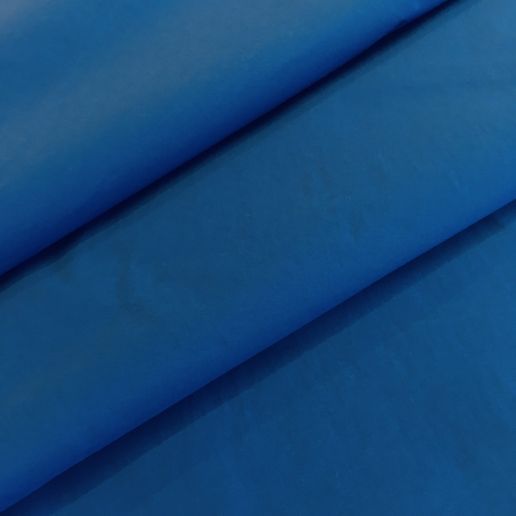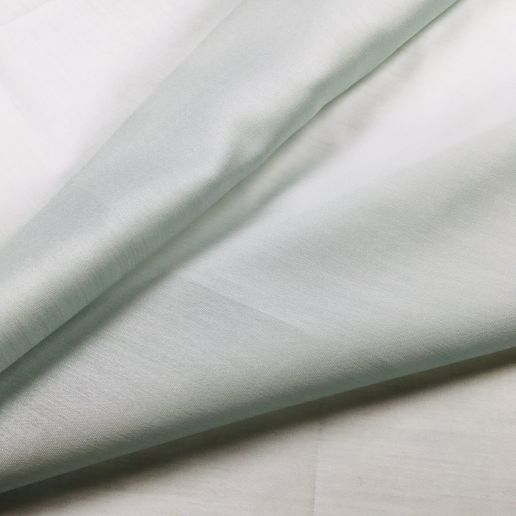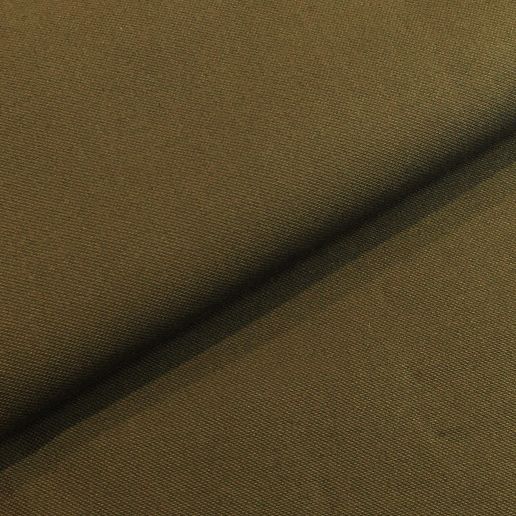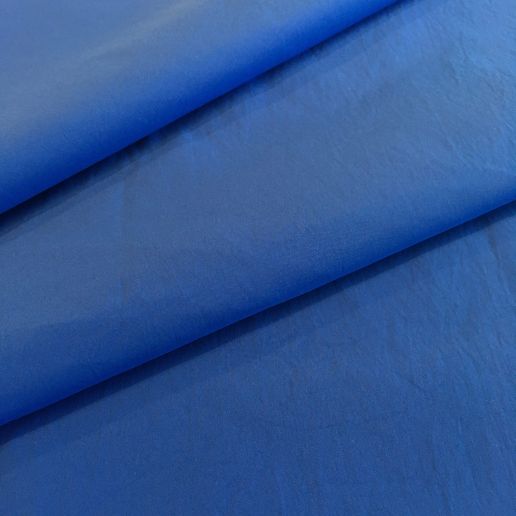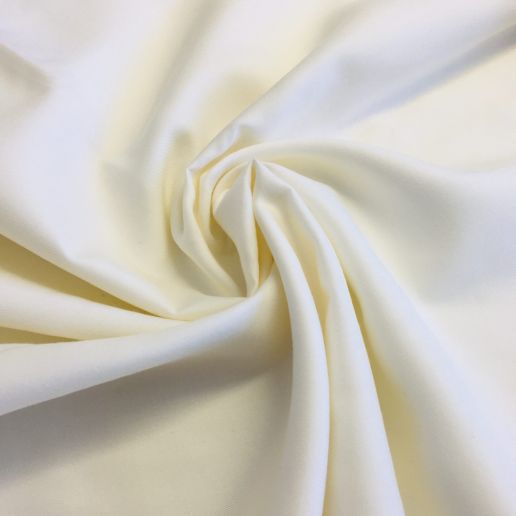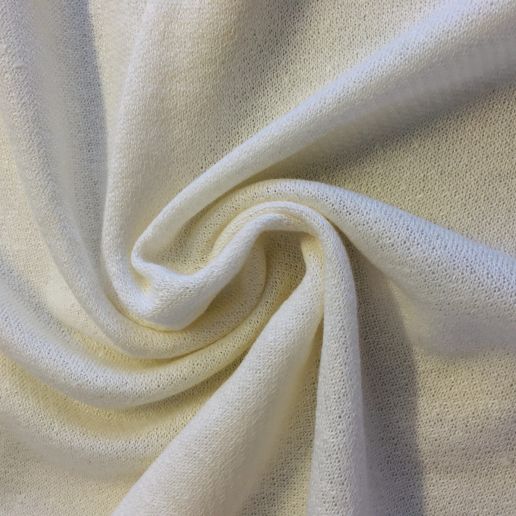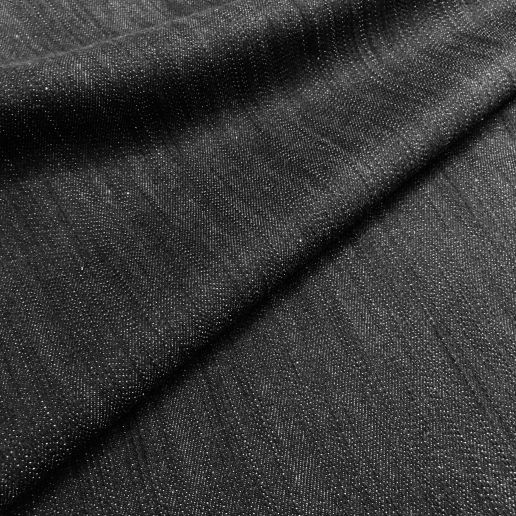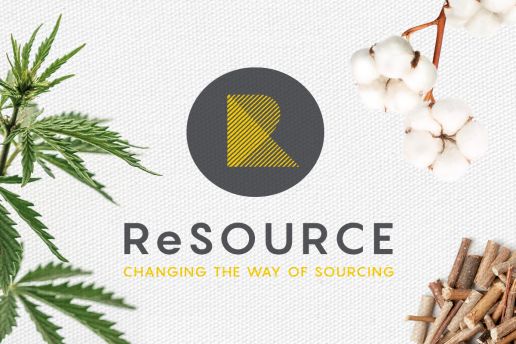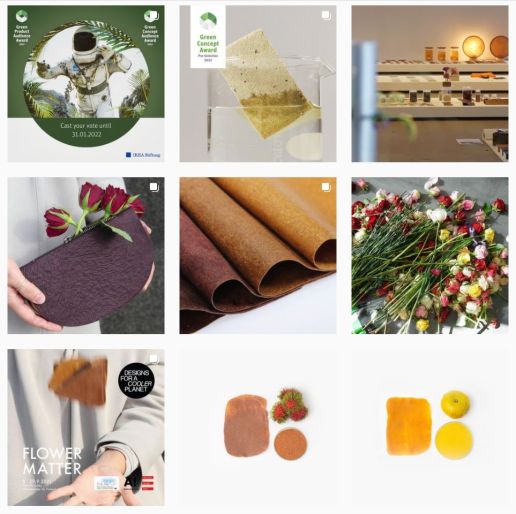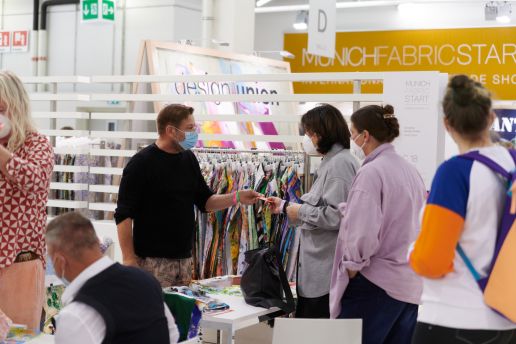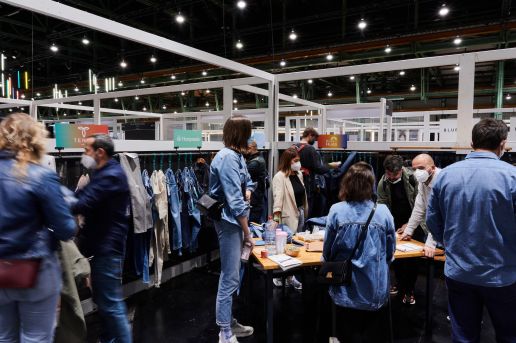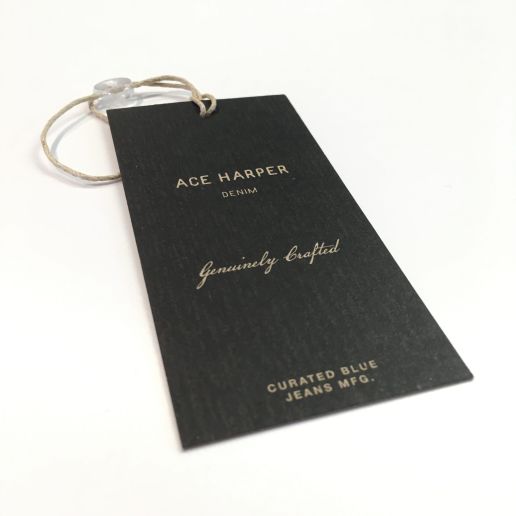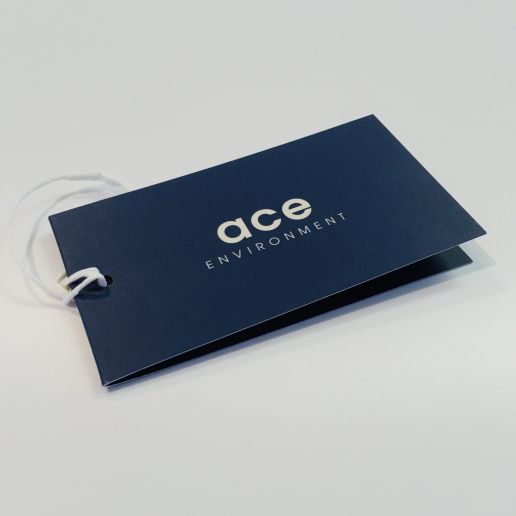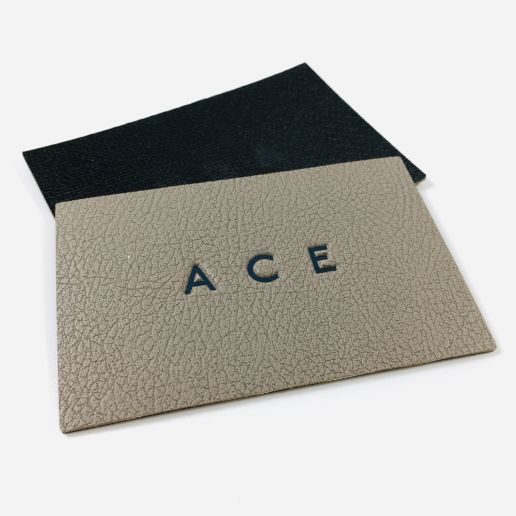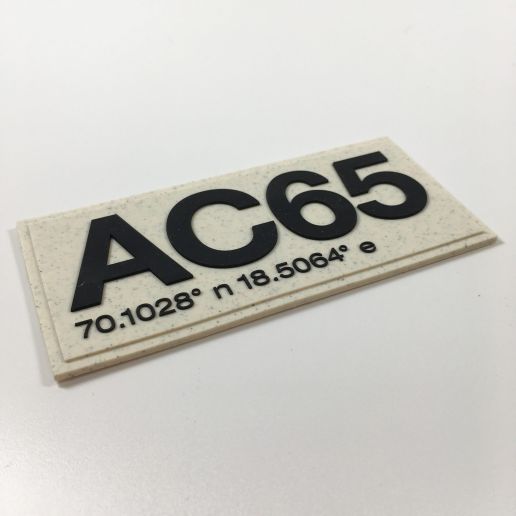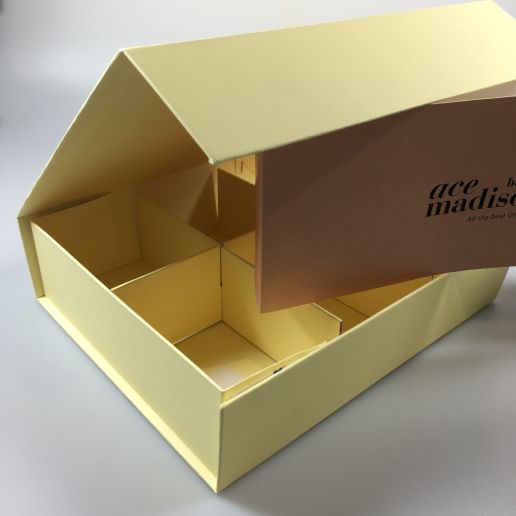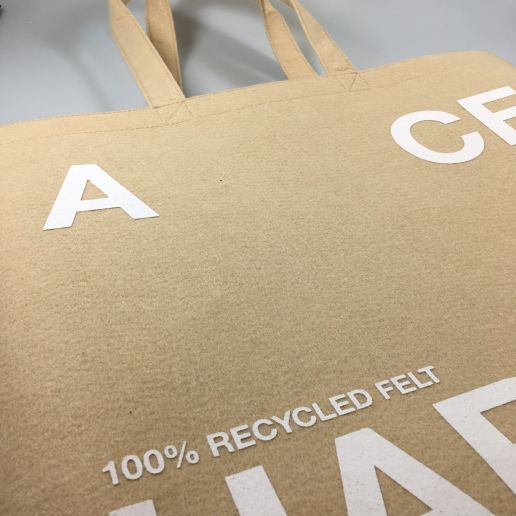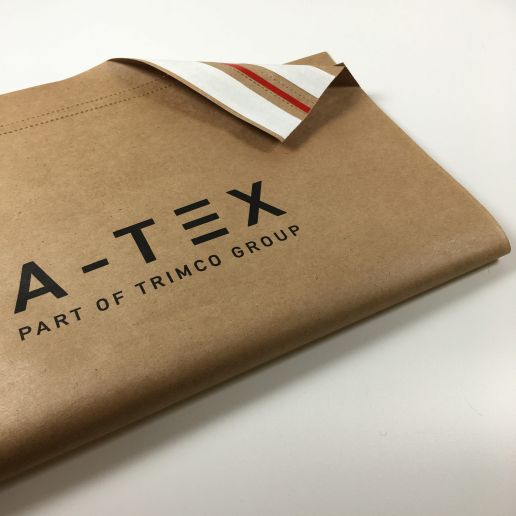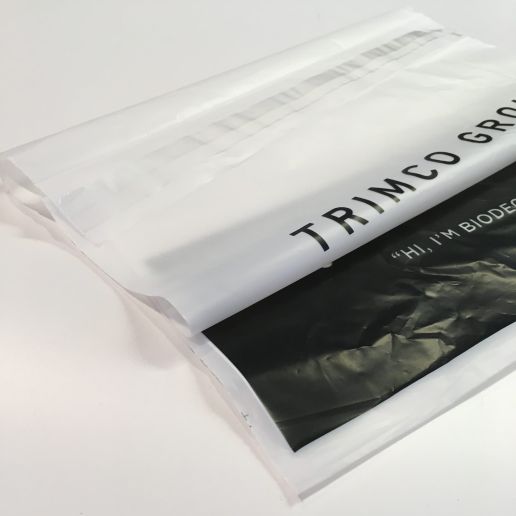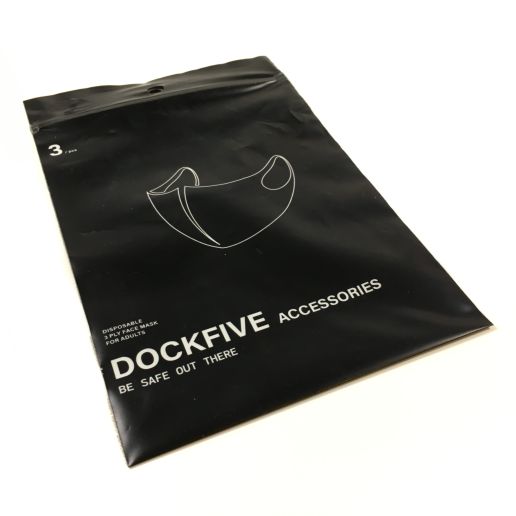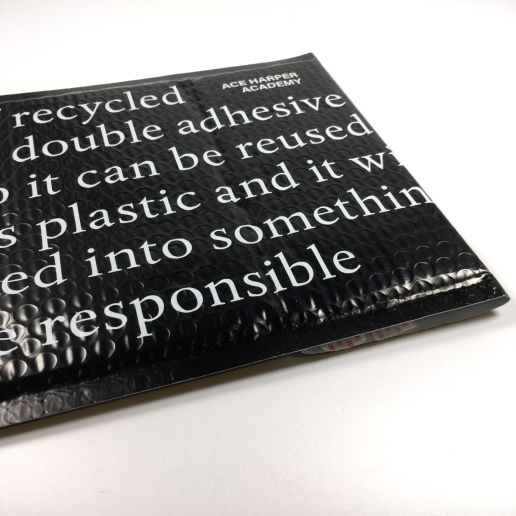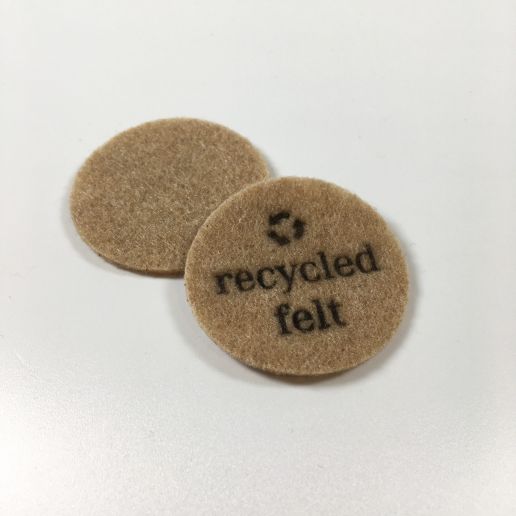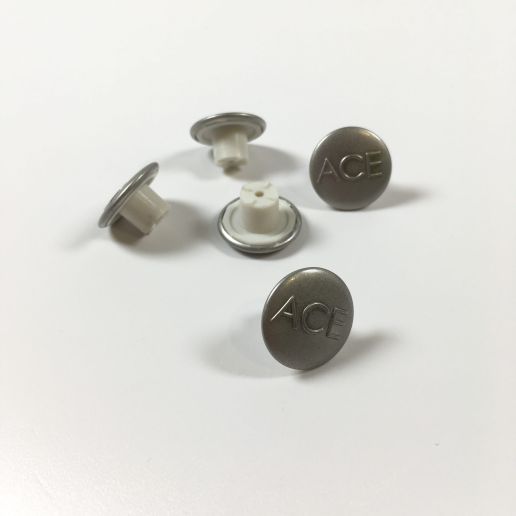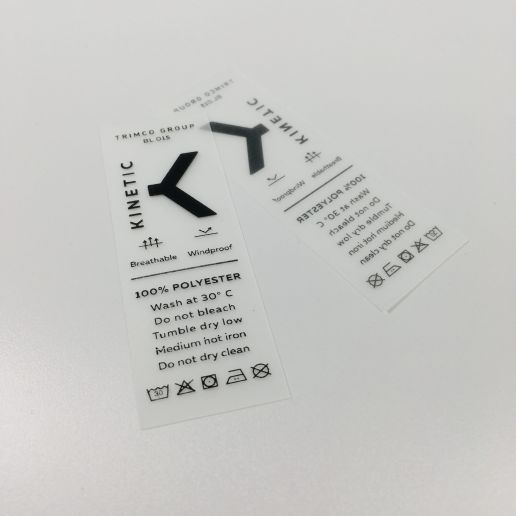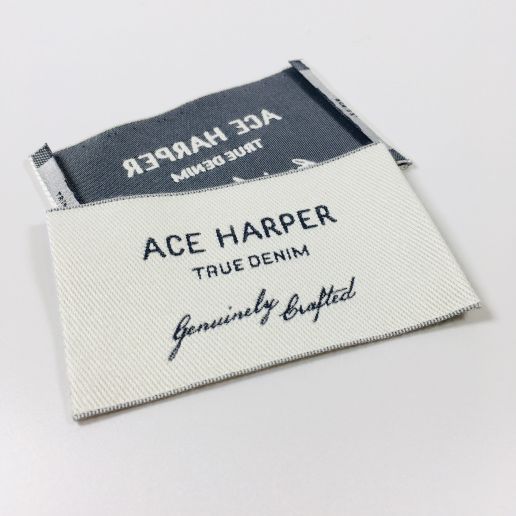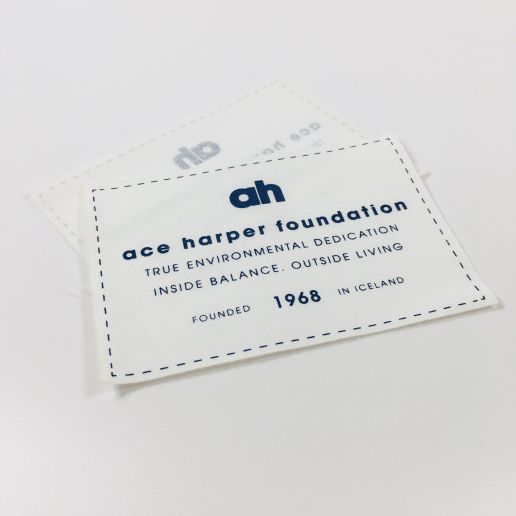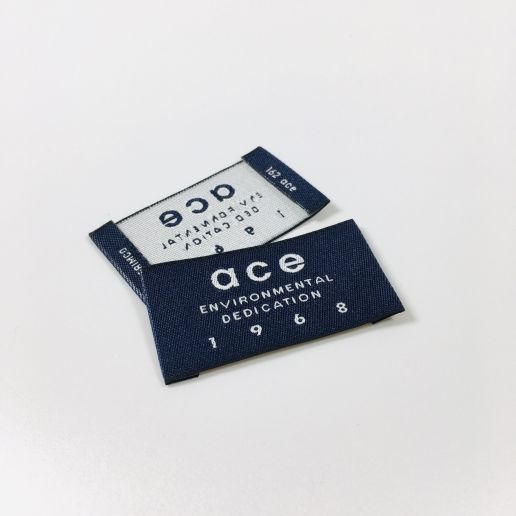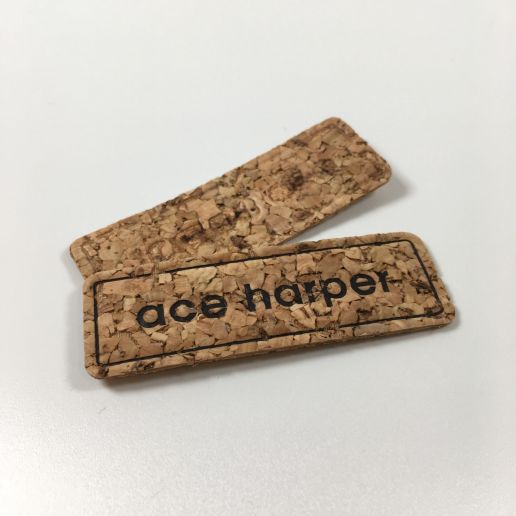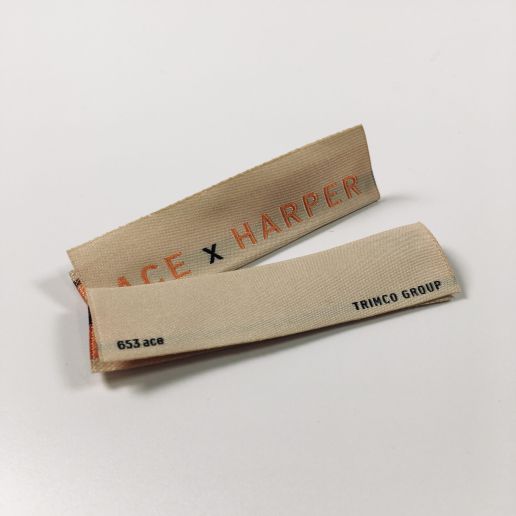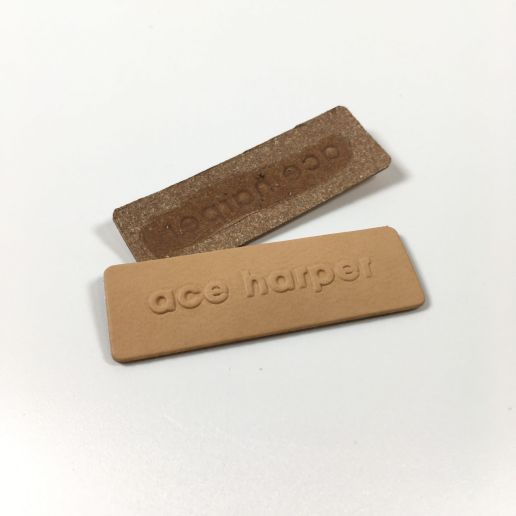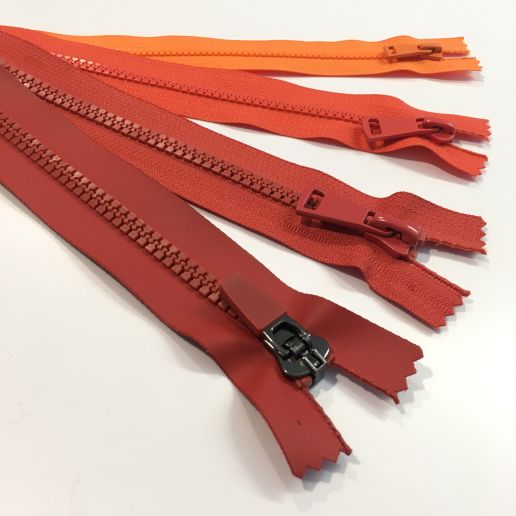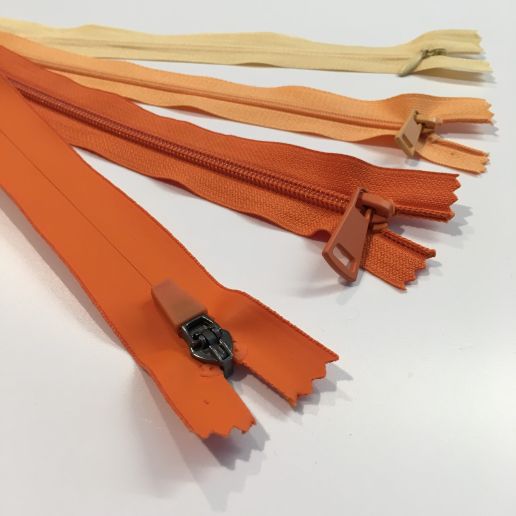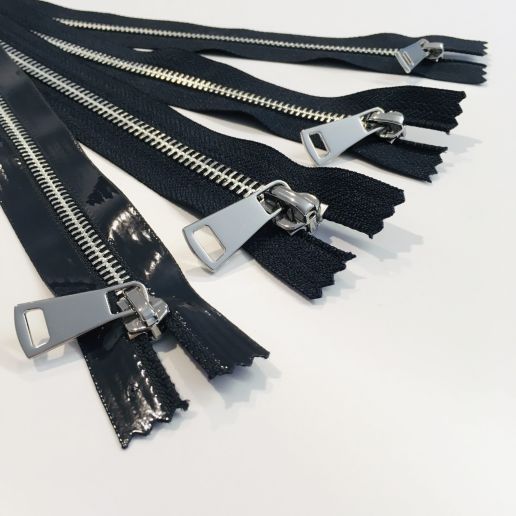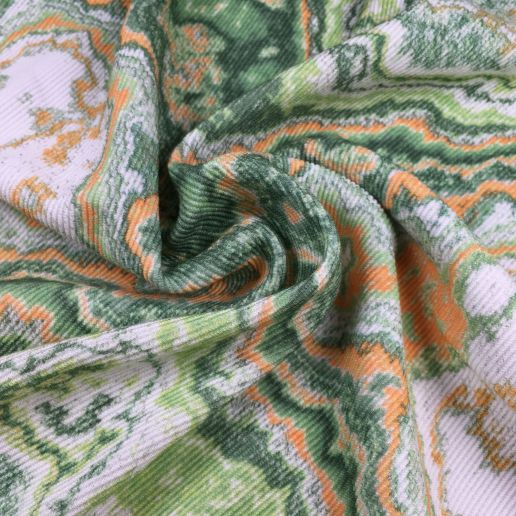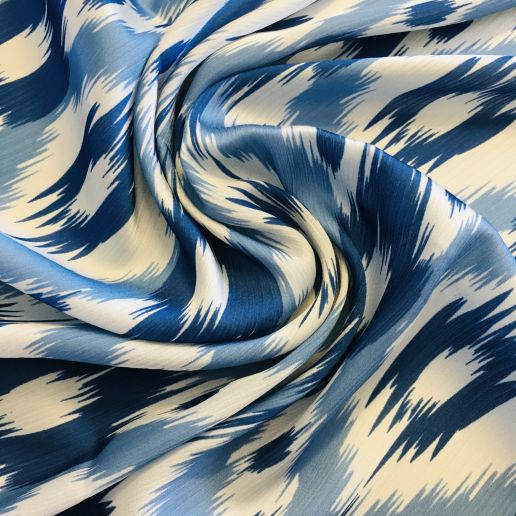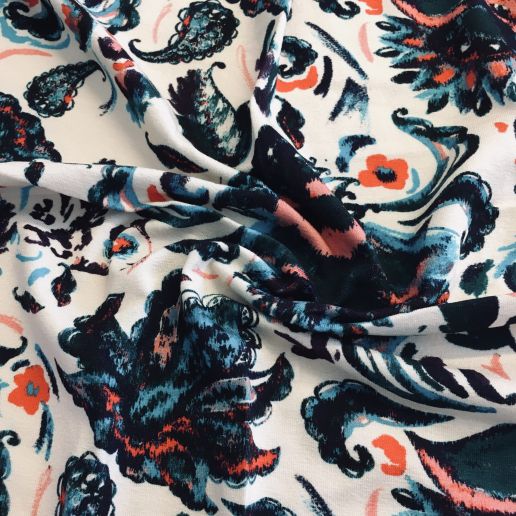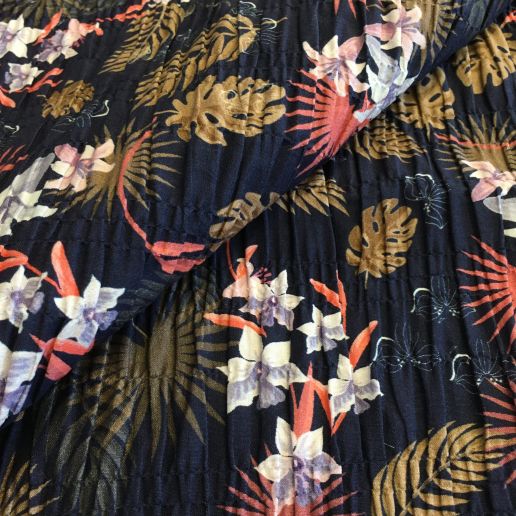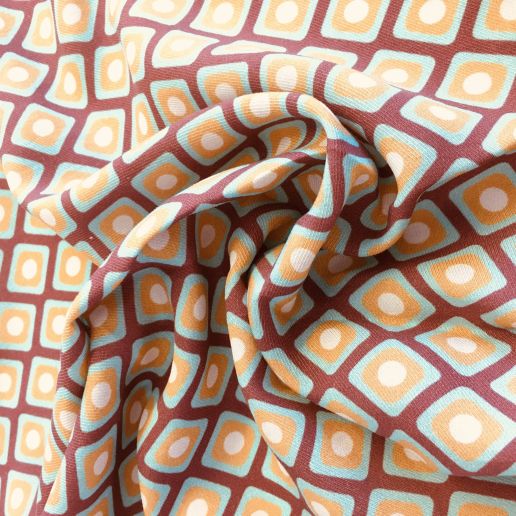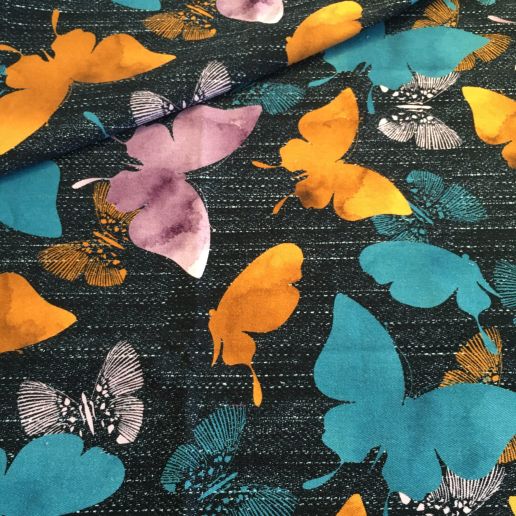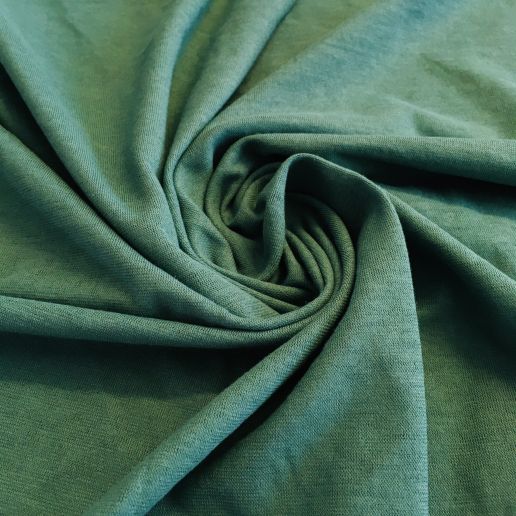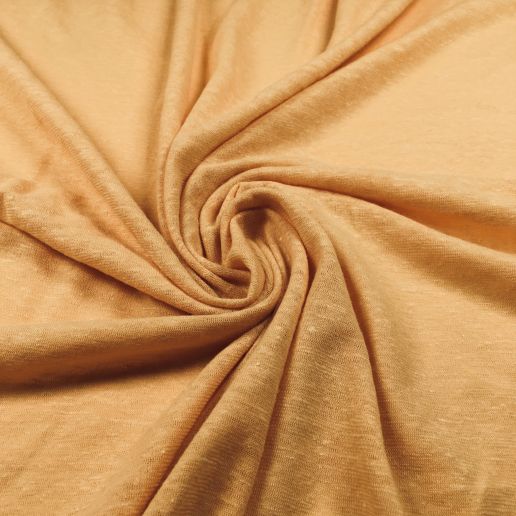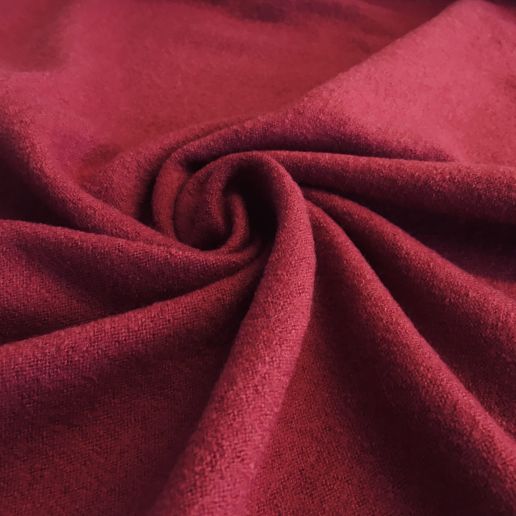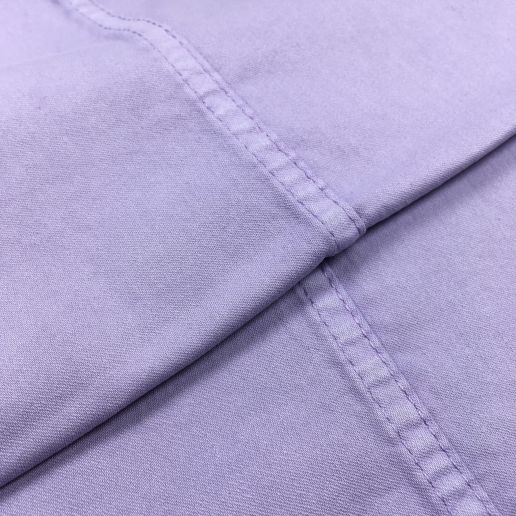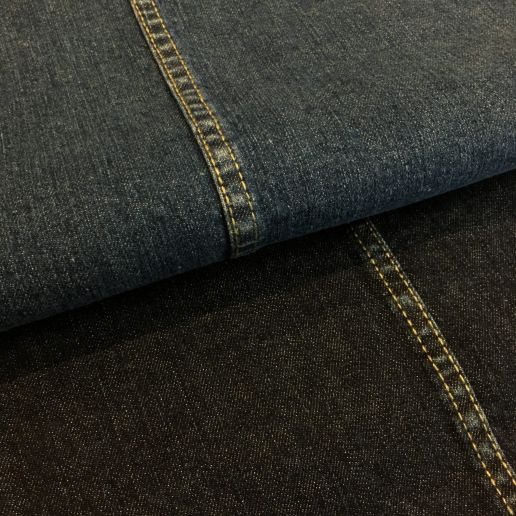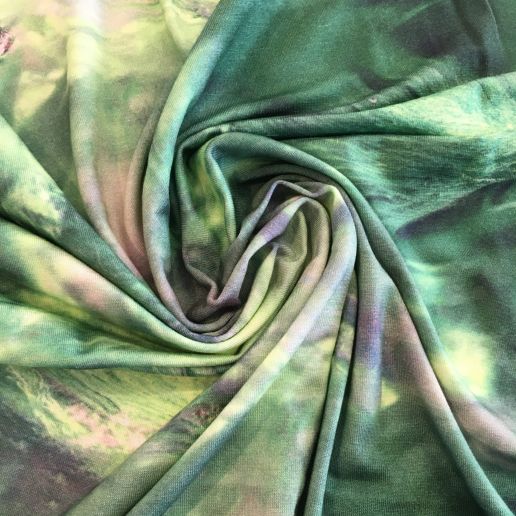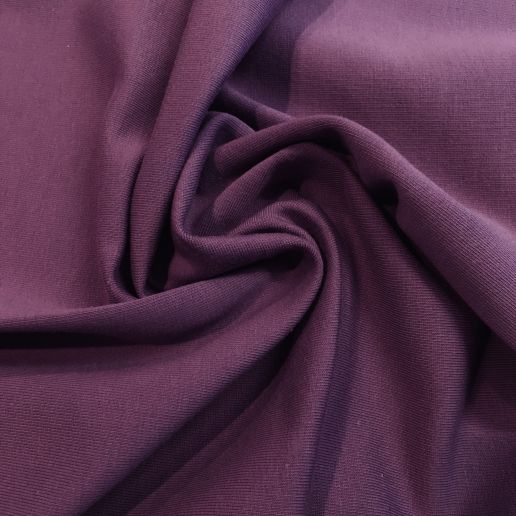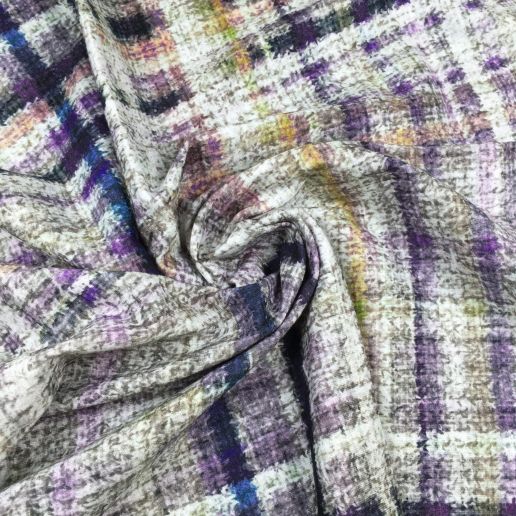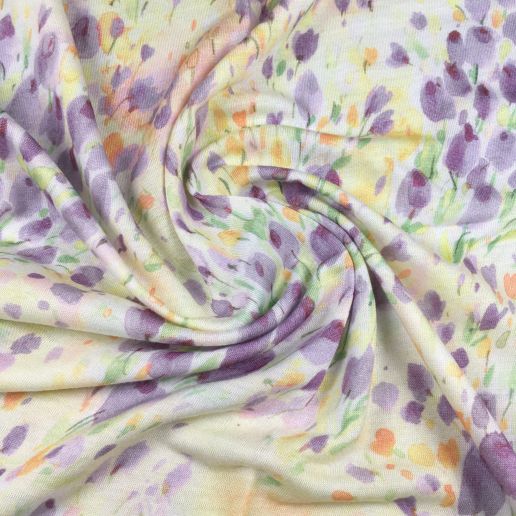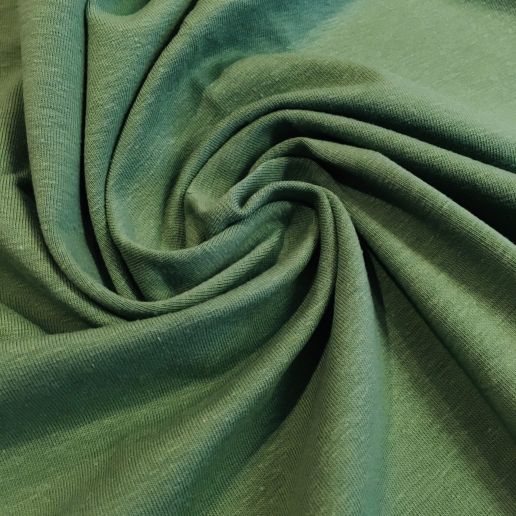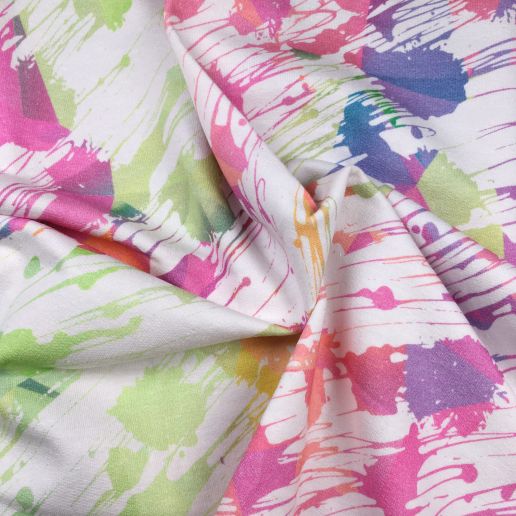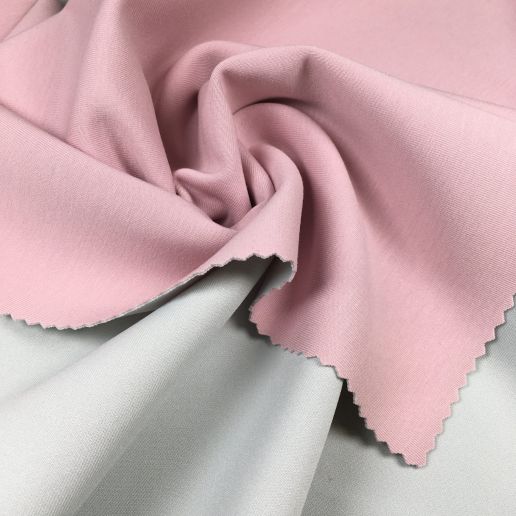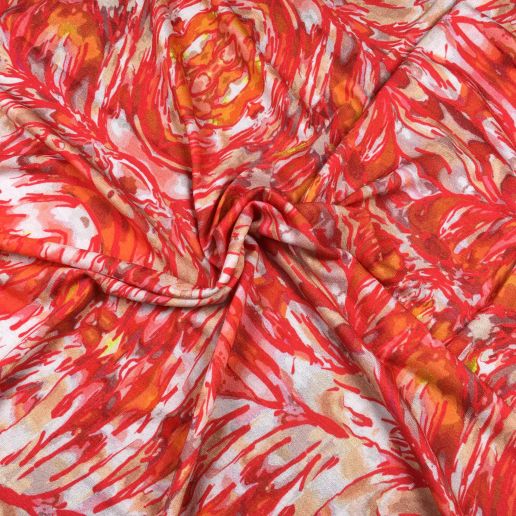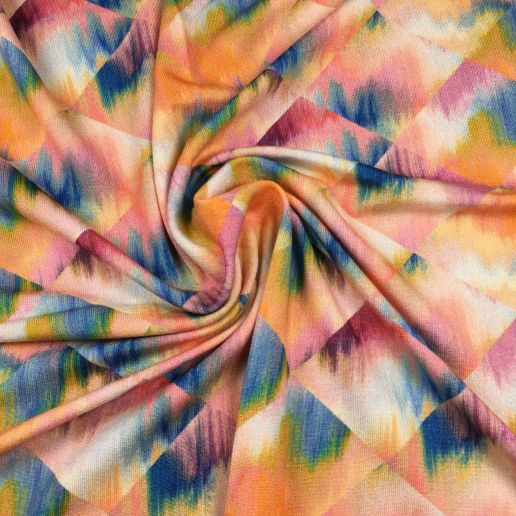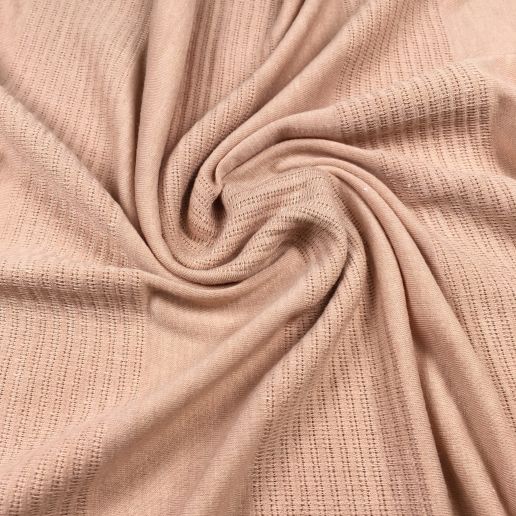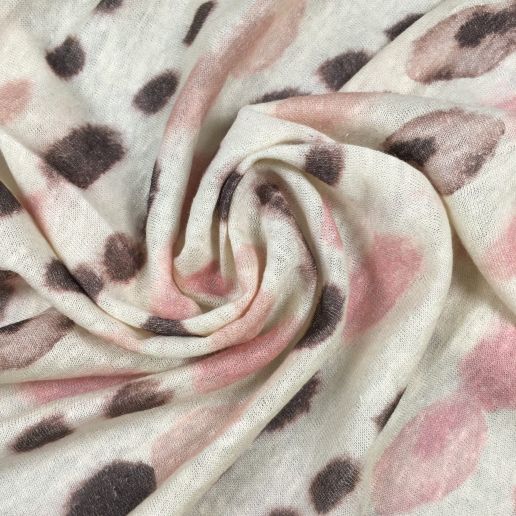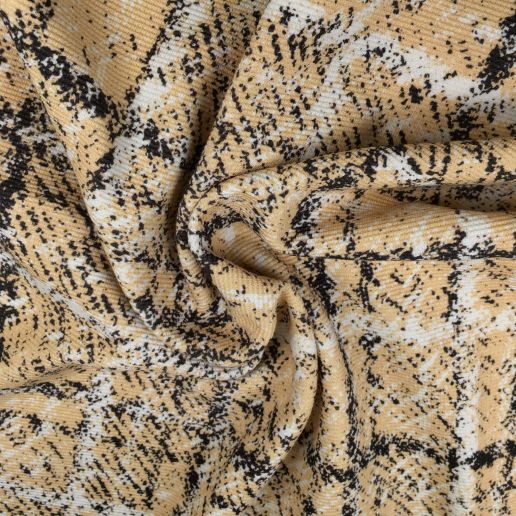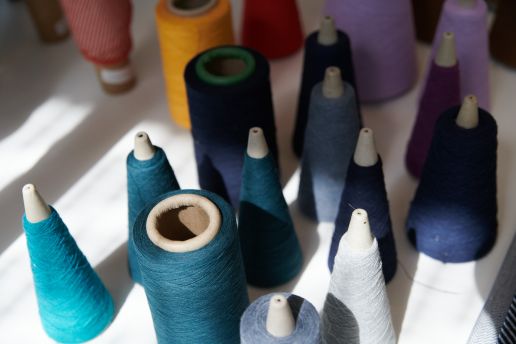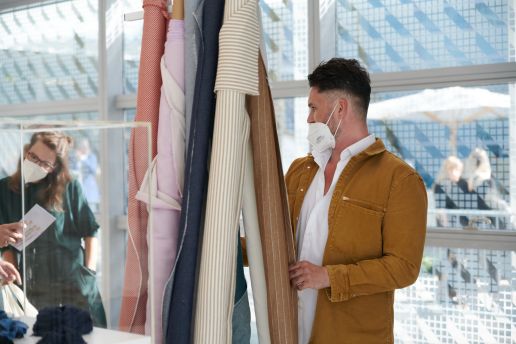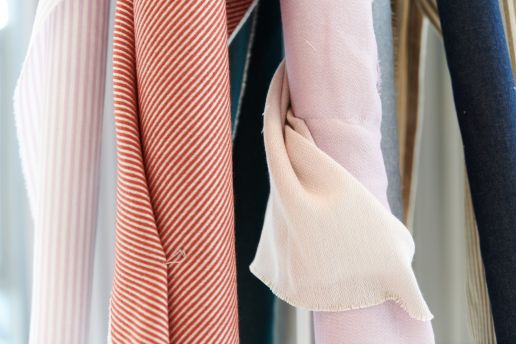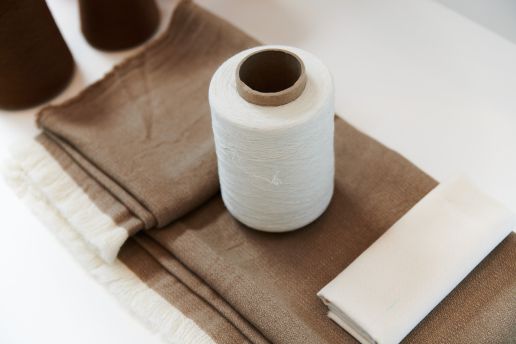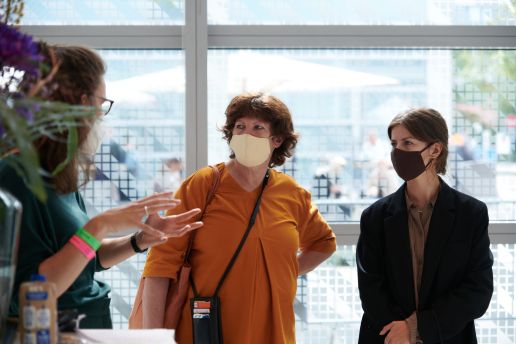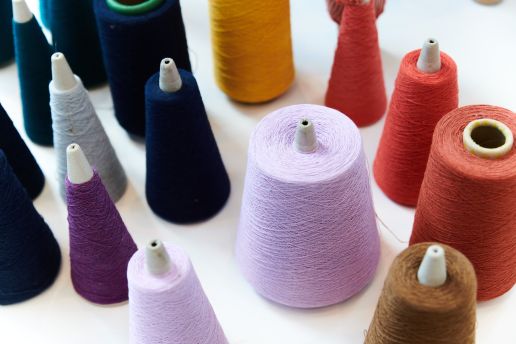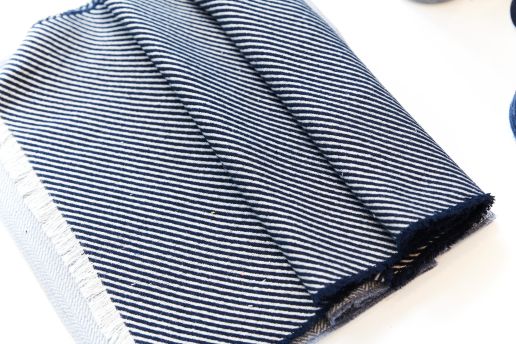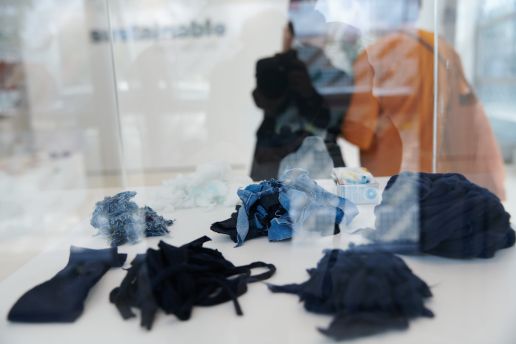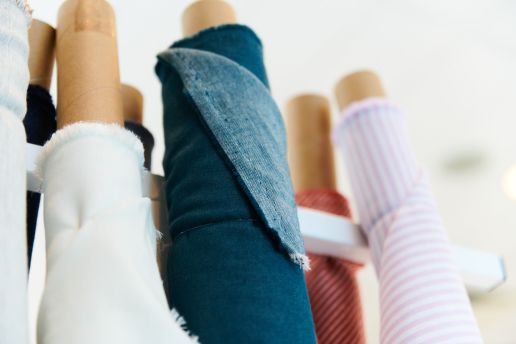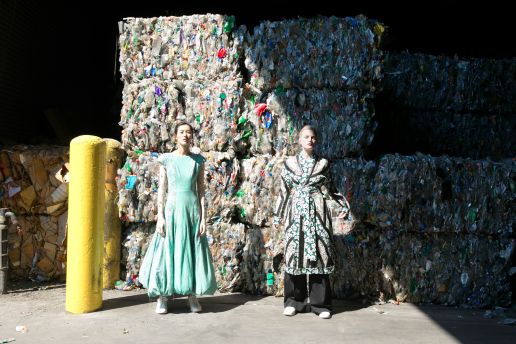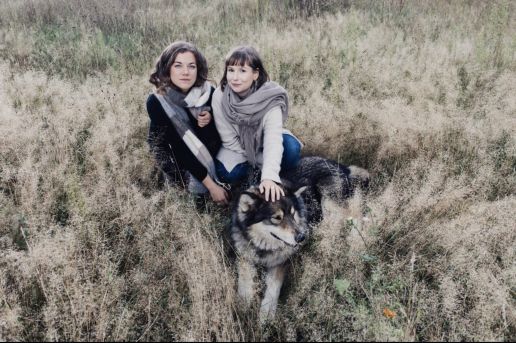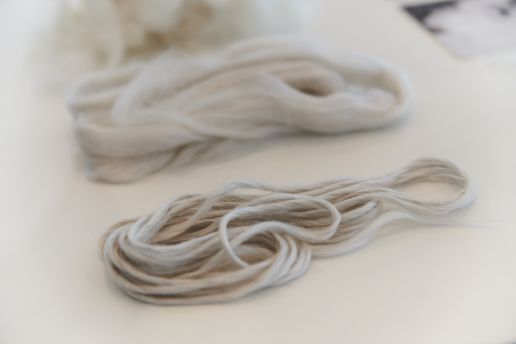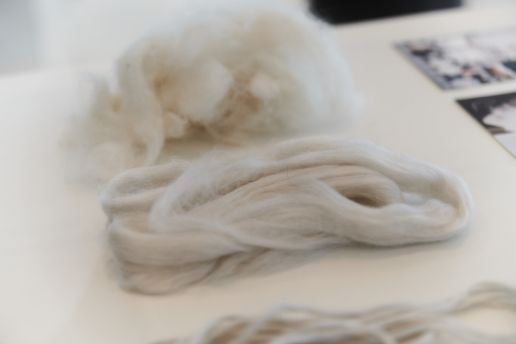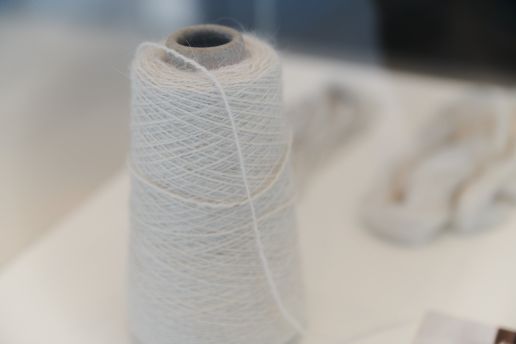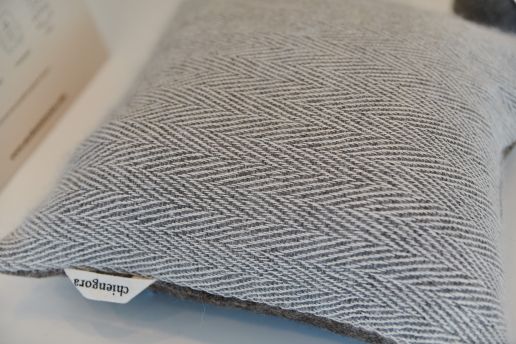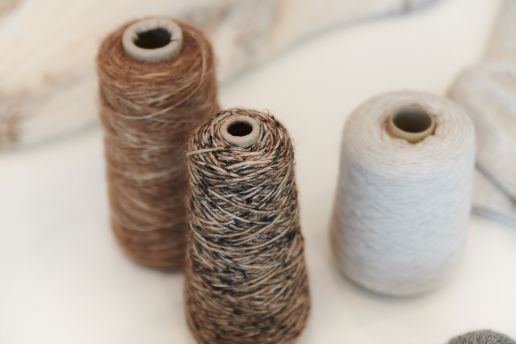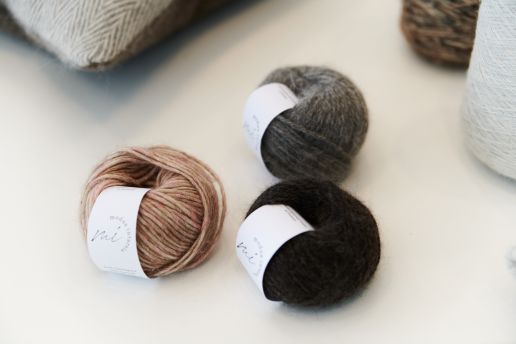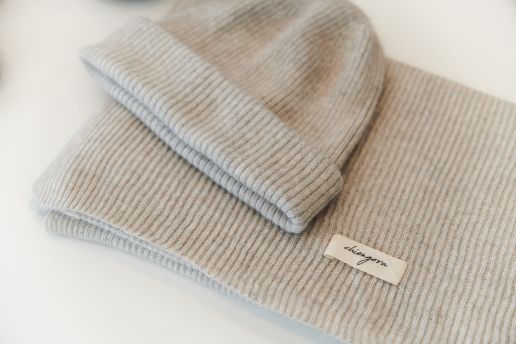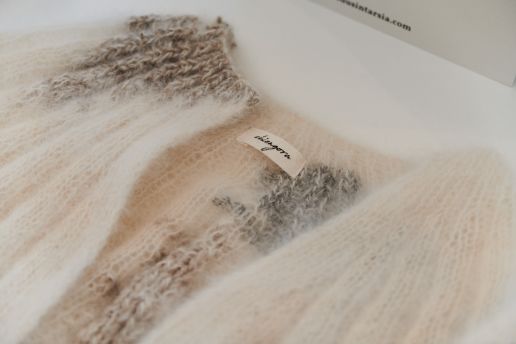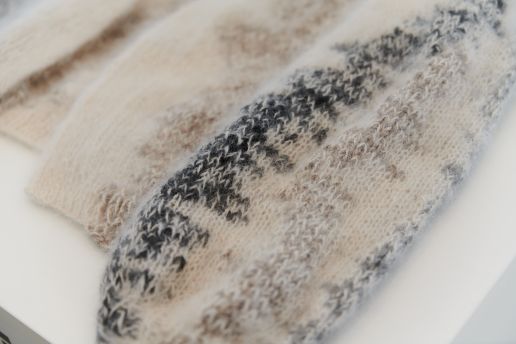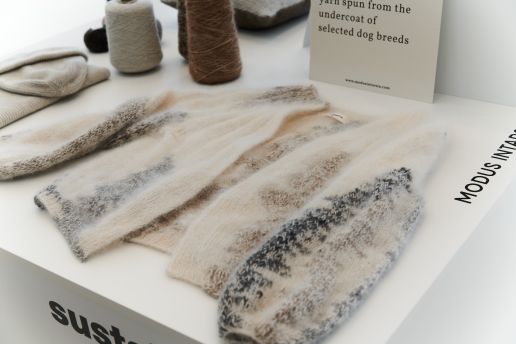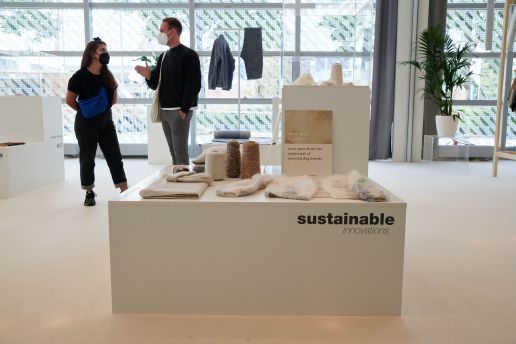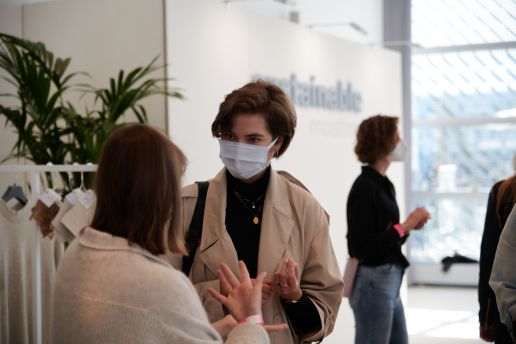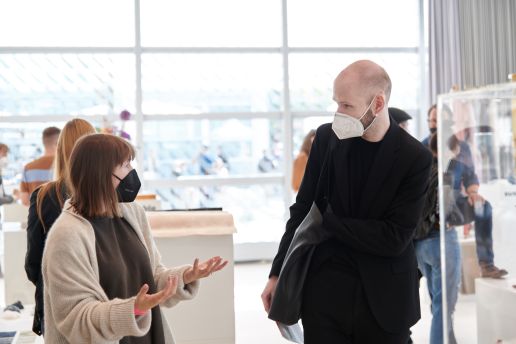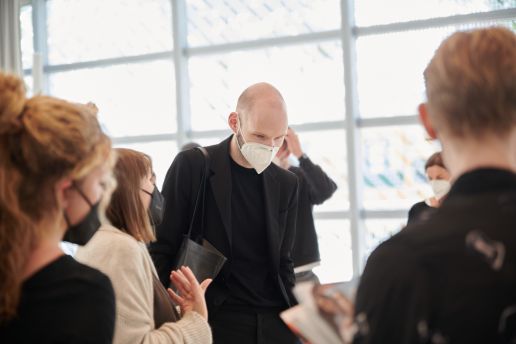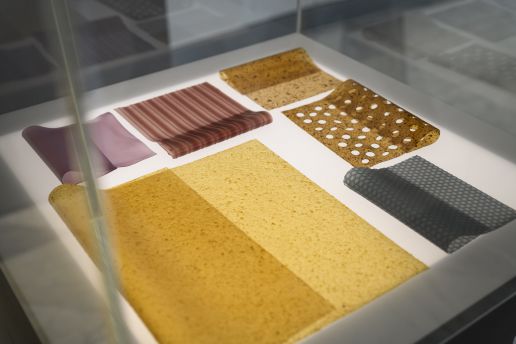Sustainability
ReSOURCE Fabrics: Ever heard of the Bemberg Fibre or Amni Soul Eco®?
ReSOURCE is the sourcing platform for environmentally friendly and responsibly produced textiles, clothing and accessories. Search, discover and connect – all in one place. Source sustainable materials online at any time on www.resource-textiles.com
This season, we received more than 180 ReSOURCE materials – together with the samples for the Autumn.Winter 22/23 season, more than 560 innovative fabrics & additionals from 87 manufacturers are presented in our Brand & Material Search.
We have already introduced you to 5 ReSOURCE Fabrics manufacturers in this Blog article. Here are the next 5 most future-oriented manufacturers with their sustainable developments for Spring.Summer 23:
- Arula GmbH
- Bloomati by Carvema Têxtil
- Ifansi Doumas Bros SA
- Takisada – Nagoya Co., Ltd.
- TMG Textiles
————————————————————————–
Arula GmbH
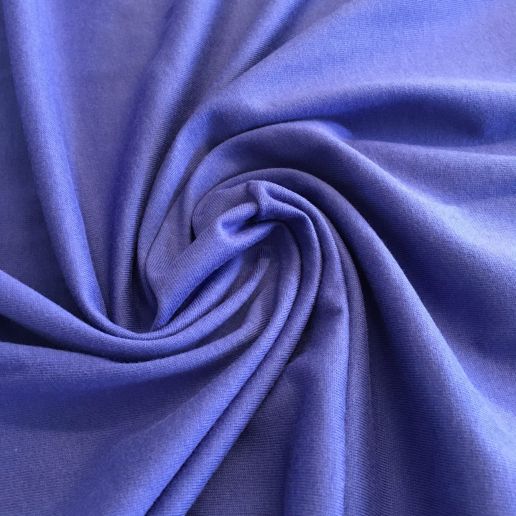
Arula is always on the lookout for something new. Together with international customers, the Austrian company develops forward-looking and customised textile solutions – Made in Austria. The specialist for high-quality knitted fabrics made of natural fibres and cellulosic man-made fibres focuses on sustainability in all areas of fully integrated production and contract processing.
“Out of consideration for our nature: we are aware that our economic goals can only be achieved in the long term if we treat our environment with care.”
– Arula GmbH
<< Cotton-Jersey
- Categories: GOTS, Organic/Natural
- Composition: 100% kbA Cotton
- Weight: 150 g/sqm
- Applications: Jersey Fabrics
- Certifications: GOTS, STANDARD 100 by Oeko-Tex®, STeP by Oeko-Tex
- Categories: Biodegradable, Innovative Alternatives, Organic/Natural
- Composition: 55% kbA Cotton, 45% Polyamide
- Weight: 150 g/sqm
- Applications: Jersey Fabrics
- Certifications: STANDARD 100 by Oeko-Tex®, STeP by Oeko-Tex
- Special Feature: Amni Soul Eco® is the first biodegradable yarn from Polyamide 6.6 worldwide
- Categories: Biodegradable, Innovative Alternatives, Organic/Natural
- Composition: 55% kbA Cotton, 45% Polyamide
- Weight: 150 g/sqm
- Applications: Jersey Fabrics
- Certifications: STANDARD 100 by Oeko-Tex®, STeP by Oeko-Tex
- Special Feature: Amni Soul Eco® is the first biodegradable yarn from Polyamid 6.6 worldwide
————————————————————————–
Bloomati by Carvema Têxtil
Bloomati by Carvema Têxtil has been pursuing an ecological approach from the very beginning with the aim of reducing the environmental impact of its textile processes. The Portuguese company therefore offers a wide range of sustainable options. Discover the wide selection of organic cotton, lyocell or modal in the form of jersey, rib, fleece or interlock, as well as knitted fabrics from recycled fibres, bamboo or hemp.
<<< Antibacterial, recycled Jersey fabric
- Categories: Recycled
- Composition: 89% rec Polyester, 11% Elastane
- Weight: 190 g/sqm
- Applications: Apparel, Jersey Fabrics
- Special Feature: Antibacterial finishing
- Certifications: GRS, STANDARD 100 by Oeko-Tex®
- Categories: Regenerated Cellulosics
- Composition: 95% Modal, 5% Elastane
- Weight: 450 g/sqm
- Applications: Apparel, Jersey Fabrics, Regenerative Textiles
- Special Feature: Cellulose-based man-made fibre; the fabric finish increases the elasticity of the fabric by 20%.
- Certifications: STANDARD 100 by Oeko-Tex®
————————————————————————–
Ifansi Doumas Bros SA
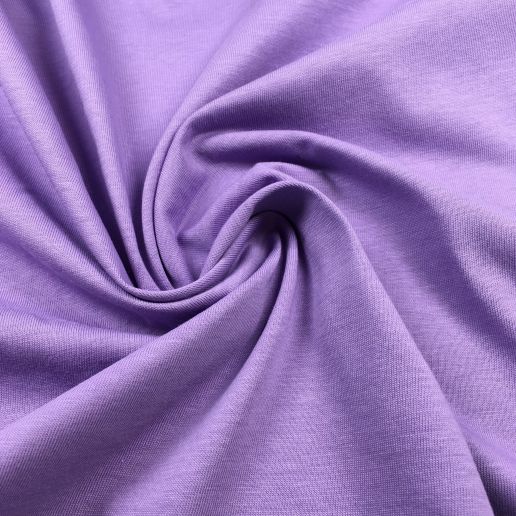
- Categories: Organic/Natural
- Composition: 100% kbA Cotton
- Weight: 150 g/sqm
- Applications: Apparel, Cotton Fabrics, Jersey Fabrics
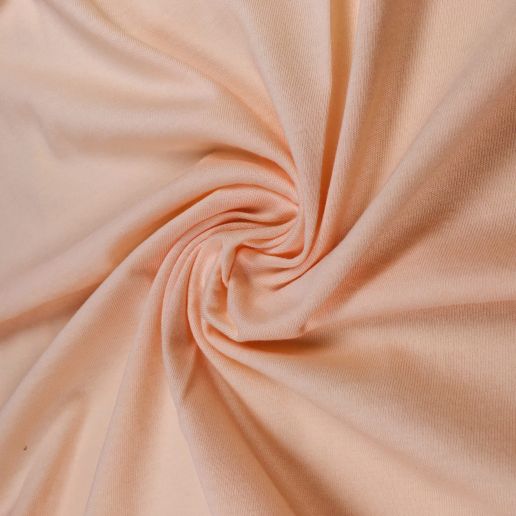
- Categories: Organic/Natural, Regenerated Cellulosics
- Composition: 50% Modal, 50% kbA Cotton
- Weight: 135 g/sqm
- Applications: Apparel, Cotton Fabrics, Jersey Fabrics
- Certifications: OCS BLENDED
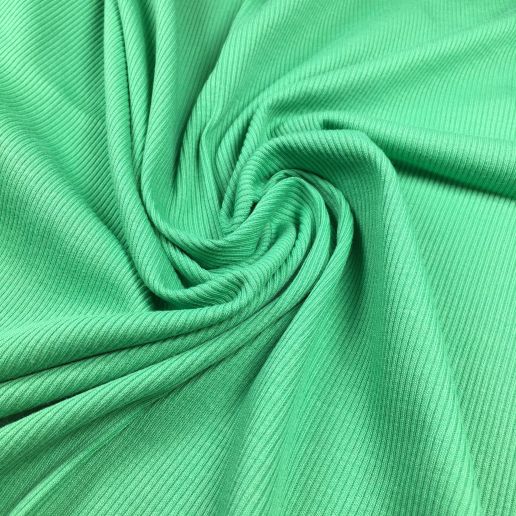
- Categories: Organic/Natural, Regenerated Cellulosics
- Composition: 47,5% kbA Cotton, 47,5% Modal, 5% Elastane
- Weight: 230 g
- Applications: Apparel, Cotton Fabrics, Jersey Fabrics
- Special Feature: Organic Rib 2*2
- Certifications: OCS BLENDED
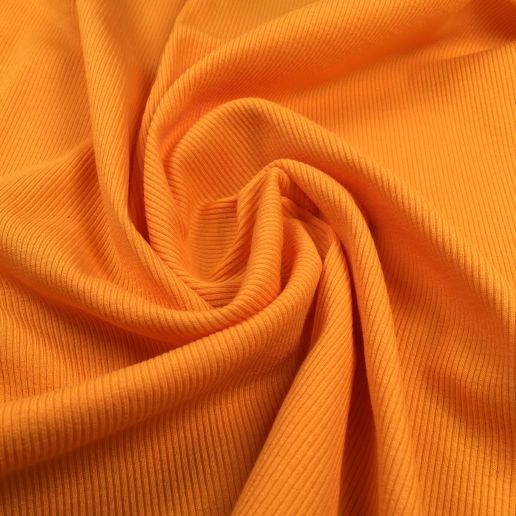
Ifansi was founded by Pantelis Doumas in 1967 as a small family business. The Greek business’ focus is on innovating with new production techniques to expand the range of fabrics and dyes to meet the industry needs. A fashionable color range meets natural fibers.
<< Rib 2*2
- Categories: Organic/Natural
- Composition: 95% kbA Cotton, 5% Elastane
- Weight: 220 g/sqm
- Applications: Apparel, Cotton Fabrics, Jersey Fabrics
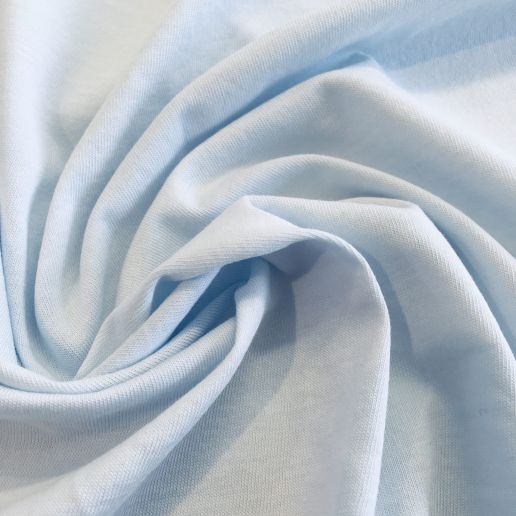
- Categories: Organic/Natural
- Composition: 100% kbA Cotton
- Weight: 120 g/sqm
- Applications: Apparel, Cotton Fabrics, Jersey Fabrics
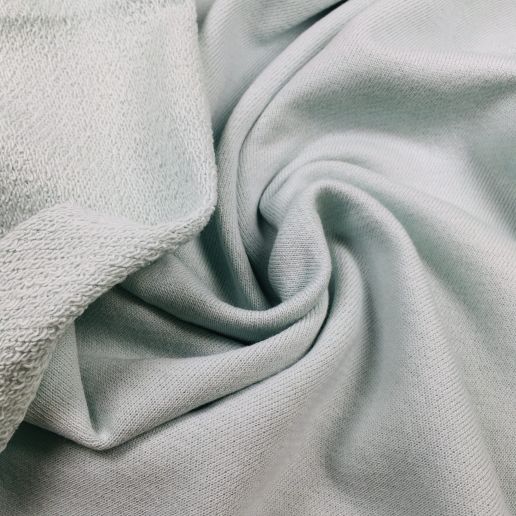
- Categories: Organic/Natural, Regenerated Cellulosics
- Composition: 65% kbA Cotton, 35% Modal
- Weight: 240 g/sqm
- Applications: Apparel, Jersey Fabrics
- Certifications: OCS BLENDED
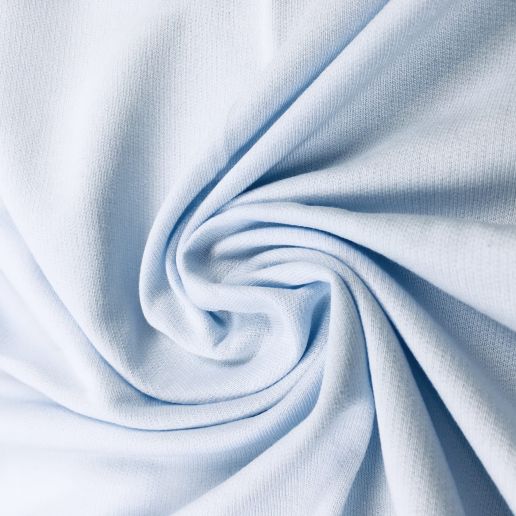
- Categories: Organic/Natural, Regenerated Cellulosics
- Composition: 70% kbA Cotton, 30% Modal
- Weight: 210 g/sqm
- Applications: Cotton Fabrics, Jersey Fabrics, Modal
- Certifications: OCS BLENDED
————————————————————————–
Takisada - Nagoya Co., Ltd.
TAKISADA-NAGOYA has the planning capabilities to express the global fashion of tomorrow. These consist of realising seasonal products and having the production capacity to deliver products to shops on time based on consistent quality and delivery date management. However, the value offered does not end there. The business spirit is demonstrated in reducing risks for customers at every step from production to distribution.
————————————————————————–
TMG Textiles
<<< Pure white Lyocell
- Categories: Regenerated Cellulosics
- Composition: 100% Lyocell
- Weight: 120 g/sqm
- Applications: Apparel, Regenerative Textiles
————————————————————————–
Sustainable Innovations #2: Flower Matter
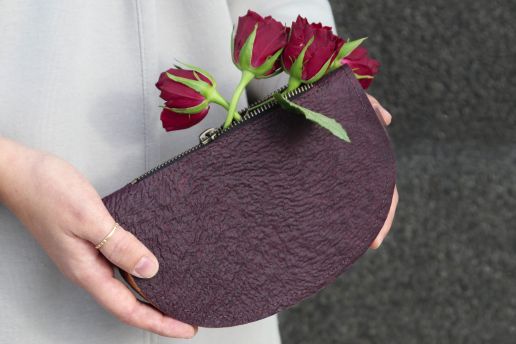

Whether for the home, in a restaurant or as a gift for loved ones – beautiful bouquets of flowers bring joy in many situations in life. The problem: flowers planted for commercial sale have a very limited lifespan. Once they are in the vase, they wilt after a few days and are thrown away – about 40 percent of the flowers are never sold, so florists have to dispose of them themselves. Irene Purasachit, a designer living in Finland, gives these flowers a second life – driven by the vast amounts of flower waste that are produced daily at the markets in her home country of Thailand.
She recycles them into fabric and paper, from which she makes sustainable bags, purses or flower paper. This not only creates new, biodegradable and plastic-free products – it also saves tons of waste.
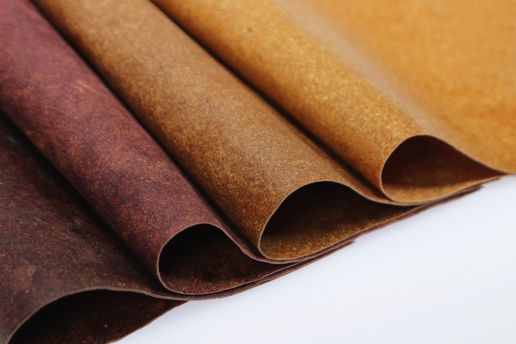
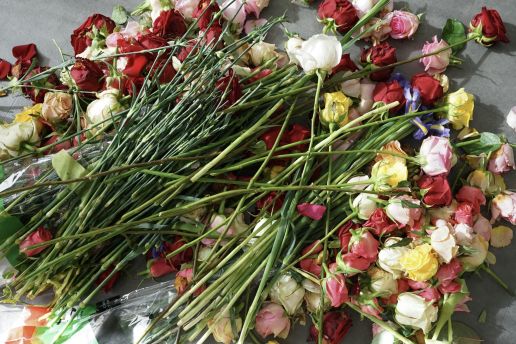
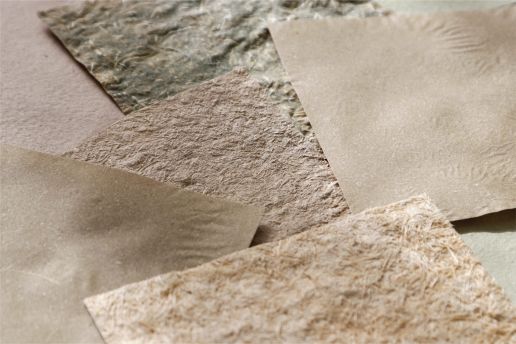
For her Flower Matter project, she creates, among other things, “Flower Paper”, a paper made of 100 percent flower stems and leaves. Unique one-offs: the paper varies in colour and structure – depending on the type of flower used. With her “Flaux” material – the word stands for Flower and Flexible Sheet – she creates an all-natural, leather-like fabric that is then made into purses and bags for her collection.
For Flaux, she mainly uses roses and carnations. The colour palette: natural, classic reds, soft pinks, bold orange and soft yellows – there’s something for everyone.
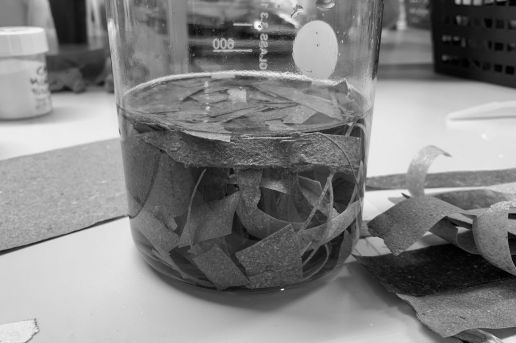
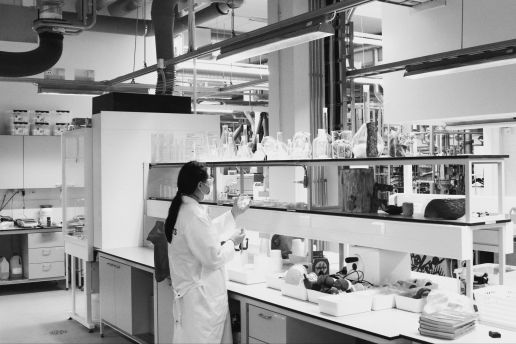
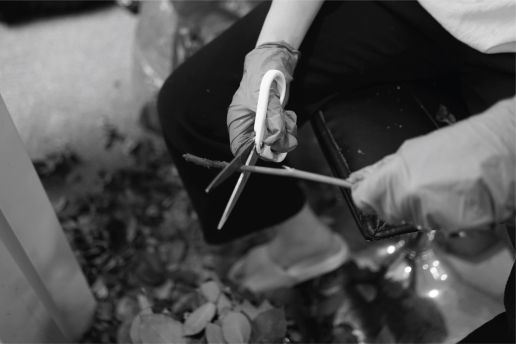
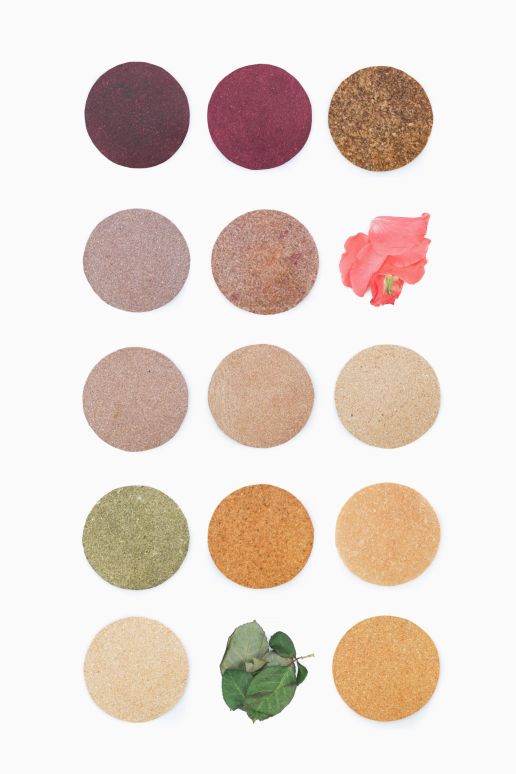
“Even though I am still in a considerably early stage of the materials’ development, I have been facing many dilemmas on what really is sustainable throughout my journey of Flower Matter. For example, how can I create a completely natural, biodegradable material from flower waste that can live up to the market’s high expectations on its properties (extremely durable, waterproof, etc)? Ultimately, I learned that it is extremely hard to maintain all expectations. Aside from my intention to continue developing my flower materials as ecologically as possible, I also want to challenge the market’s perceptions toward innovative materials. I do think that in order to move forward to a more sustainable world, we must learn to use and to work with new materials in a different way than the highly industrialised processes we are used to now.”
– Irene Purasachit
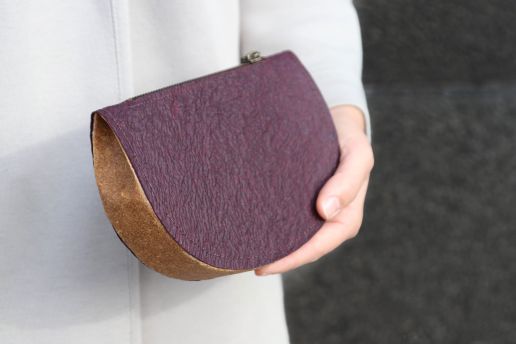
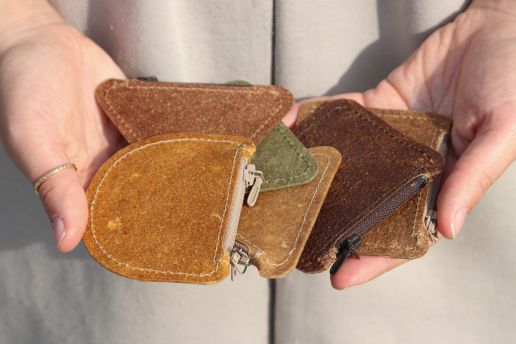
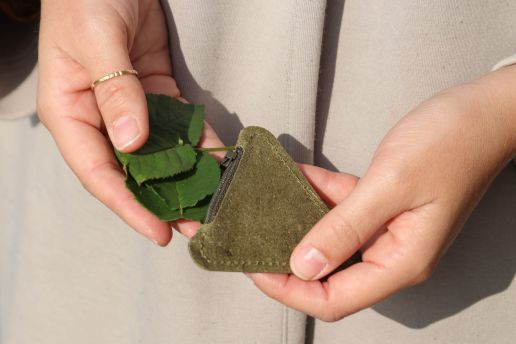
Please find more infos about SUSTAINABLE INNOVATIONS in our newest interview with Simon Angel, Curator of the Sustainable Innovations Forum, and in the article about the project #1 ‘Biotic’:
Interview about Pre-Creation, -Action and -Connection in the fashion industry >>
Sustainable Innovations SS23 #1: Bacteria to wear by Lionne van Deursen >>
—————————————————————-
Holistic sustainability? Thanks to these ReSOURCE Additionals
ReSOURCE is the sourcing platform for environmentally friendly and responsibly produced textiles, clothing and accessories. Search, discover and connect – all in one place. Source sustainable materials online anytime www.resource-textiles.com
Over 180 ReSOURCE materials have reached us this season – together with the samples from the Autumn.Winter 22/23 season, more than 560 innovative fabrics & additionals from 87 companies are now being presented to you in our manufacturer and material search.
Holistic sustainability does not end with the selection of the textiles – the trims and accessories are crucial! We present the first Spring.Summer 23 developments of our ReSOURCE Additionals exhibitors
- A-TEX Germany GmbH
- Gunold GmbH
- Knopf Schäfer GmbH
- Unizip SRL
————————————————————————–
A-TEX Germany GmbH

“SWAY” towards Sustainability – A-Tex’ latest collection is a pledge to conscious solutions for fashion brands. To facilitate recycling, the company which is part of Trimco Group has focused on single-material choices rather than material blends, multiple-use innovative packaging and minimisation of material waste. Split into Contemporary, Sport, Formal and Denim, the “SWAY” collection merges bold colours and fonts with cutting-edge materials, high design impact and low carbon footprint.
The latest ReSource materials from A-TEX, for example, rely on recycled materials, leather alternatives made from apple waste or natural materials such as sugar cane, bamboo or cork.
<< PACKAGING BOX MADE OF SUGAR CANE
- Categories: Organic/Natural
- Composition: 100% Sugar Cane, biobased source
- Usage: Packaging
————————————————————————–
Gunold GmbH
With the new organic cotton thread COTTY BIO, Gunold offers the industry a more comprehensive sustainability, even for embroidery and effect threads. The COTTY BIO consists of high-quality Egyptian cotton and is GOTS certified cultivated, twisted and dyed as well as certified with Oeko-Tex Standard 100. Extensive testing guarantees that COTTY BIO has the same excellent runnability as conventional COTTY. COTTY BIO is currently offered as COTTY BIO 30 in 10 modern colors and in the thickness Nm 50/2; dtex 200*2.
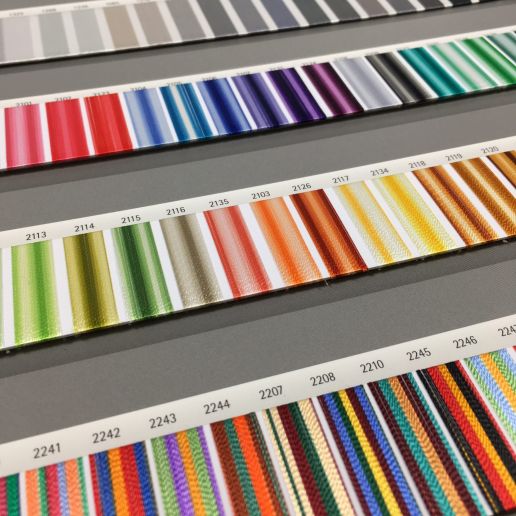
- Name: Gunold SULKY
- Categories: Biodegradable, Regenerated Celulosics
- Composition: 100% Viscose
- Certifications: FSC, STANDARD 100 by Oeko-Tex®
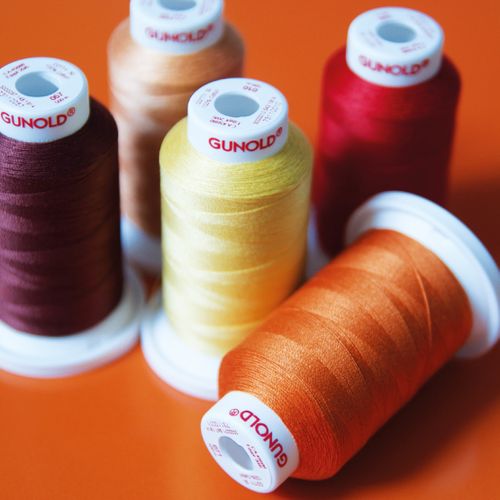
- Name: Gunold COTTY BIO
- Categories: Biodegradable, GOTS, Organic/Natural
- Composition: 100% kbA Cotton
- Certifications: GOTS, STANDARD 100 by Oeko-Tex®
————————————————————————–
Knopf Schäfer GmbH
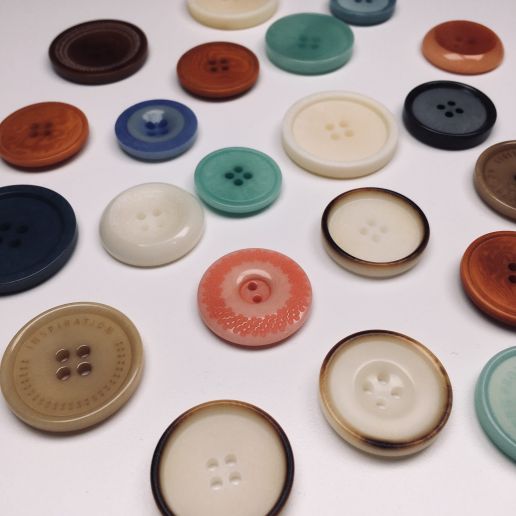
Knopf Schäfer explored three summer themes: Hybrid Smartness – Tailoring remains top but casual and smart. Adventure Resort – Sporty aesthetics play with artisanal details. Active Performance – Functionality meets urban lifestyle. Matching buttons and accessories have been developed for all themes, with special highlights in shape, colour and finish. According to the importance of sustainability, the button expert is showing a comprehensive real corozo collection.
<< COROZZO BUTTONS
- Categories: GOTS, Organic/Natural
- Composition: 100% Corozzo: Renewable resource, Ivory by nature, grain reveals through dyeing
- Certifications: GOTS, STANDARD 100 by Oeko-Tex®
————————————————————————–
Unizip SRL
Unizip’s new collection shows the creative process from a sustainable perspective while keeping the connection up-to-date with new summer trends for Spring.Summer 23. The zipper specialist aim is to create recycled zippers but also standard ones, playing with colors and new shapes. The offer ranges from basic zippers to new ideas which allow all customers to make their own customization. Innovation is the key.
<< RECYCLED ZIPPERS
- Categories: Recycled
- Composition: 6% Cupro, 28% rec Polyester, 23% Metal
- Certifications: GRS
————————————————————————–
Bacteria to wear
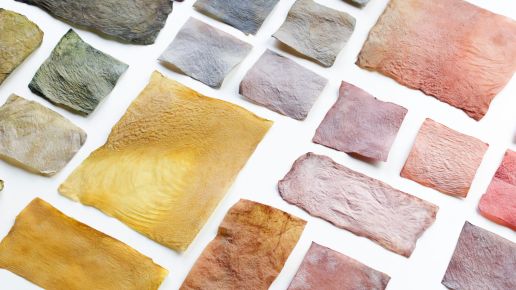
Take yeast, bacteria and sweetened green tea – this mix becomes a biodegradable, resistant and highly flexible material after a fermentation process. How it works? Microbes spin nano fibres of bacterial cellulose onto a surface. Once this layer dries, it becomes a solid material with properties very similar to leather. The thickness of the fabric can be easily adjusted during the growth process: Depending on the duration of the growth, it either becomes more unstable and thinner or firmer and thicker. Depending on the thickness, different nuances and different translucencies are created in the material. With these material properties, there are various design possibilities: For example, when wet, a texture can be applied that remains visible even when completely dry. The colour of the fabric can also be easily changed due to its high absorption capacity. Trial and error therefore pays off. Experiments with plant dyes and dyes from fruit waste have resulted in a fabric collection with bright colours, different light transmission and varied patterns.
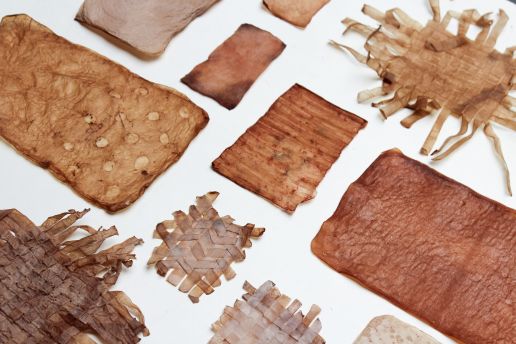
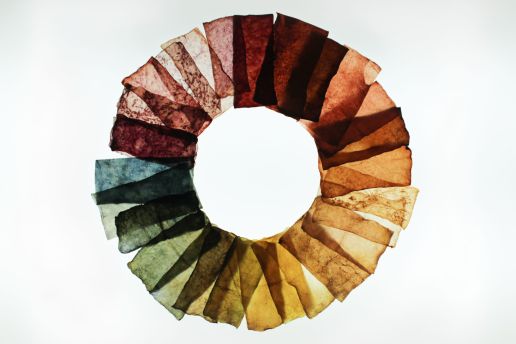
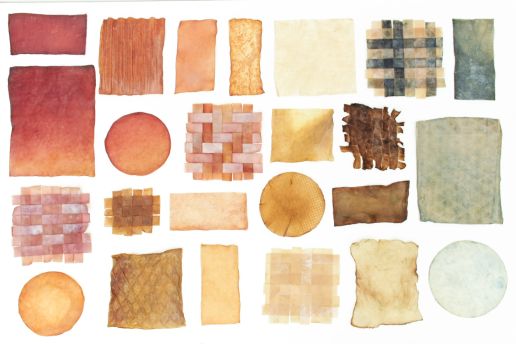
Living organisms that produce environmentally friendly materials – this stands for the “Biotic” project of the Lionne van Deursen studio from Uden in the Netherlands dedicated to material research and product design, which was launched in 2019. Through various experiments, the team generates insights into the incredible variety of new and bio-based materials. The advantages speak for themselves: only local resources are required for the production of the material and only plant-based means are used for dyeing. This results not only in sustainable materials, but above all in a sustainable production process.
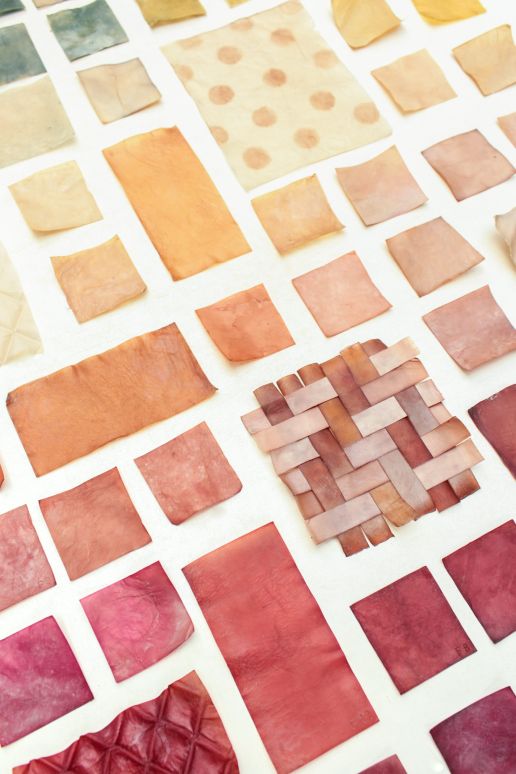
“The goal of the project is to develop sustainable products with materials that are not harmful for the environment. The project shows the possibilities of a biologically grown material. The material created by living microorganisms is biodegradable and strong while remaining a high flexibility.”
– Lionne van Deursen
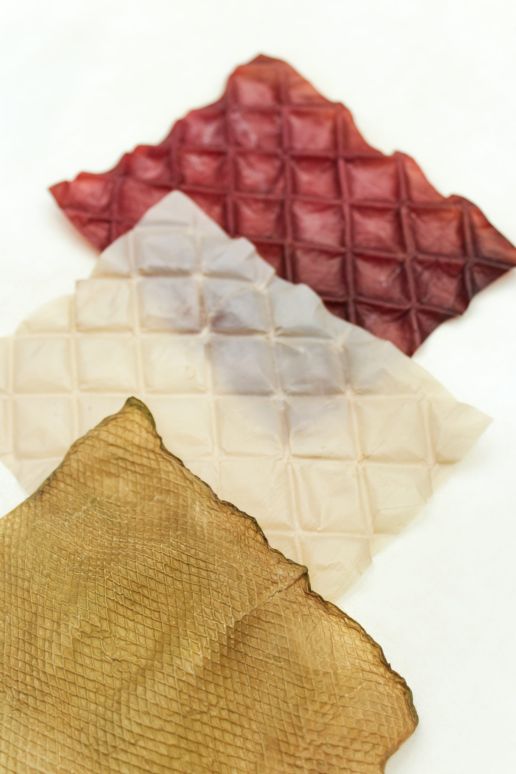
Please find more info about SUSTAINABLE INNOVATIONS in this interview with Simon Angel, curator of the Sustainable Innovations Forum:
Interview about Pre-Creation, -Action and -Connection in our industry >>
Searching for the most sustainable Fabrics of the season?
ReSOURCE is the sourcing platform for environmentally friendly and responsibly produced textiles, clothing and accessories. Search, discover and connect – all in one place. Source sustainable materials online anytime www.resource-textiles.com
More than 180 ReSOURCE materials have reached us this season – together with the samples from the Autumn.Winter 22/23 season, more than 560 innovative fabrics & additionals from 87 companies are now being presented to you in our manufacturer and material search.
Sustainable textiles are always nude, plain and boring?
Not with these Spring.Summer 23 developments from our ReSOURCE exhibitors
- Alarga Textile
- Elissa Stampa
- Sundag Heinrich
- Tejidos Royo
- Zeynar
————————————————————————–
Alarga Textile
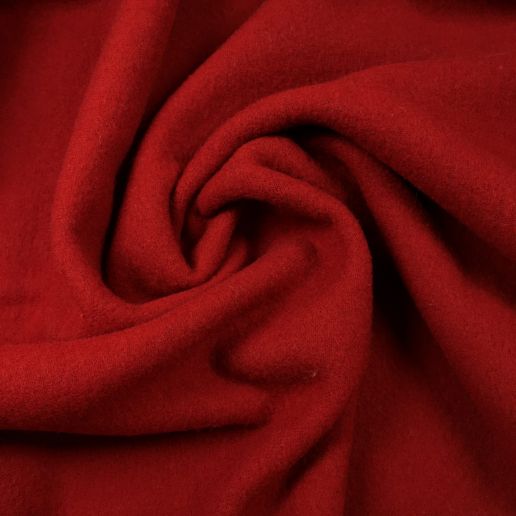
- Categories: GOTS, Organic/Natural
- Composition: 100% kbT Wool
- Weigth: 340 g/sqm
- Uses: Apparel, Fleece, Wool fabrics
Alarga Textile offers a large selection of different materials in a wide variety of colors and prints with a special focus on GOTS certification as well as on wool from controlled organic animal husbandry (kbT) and cotton from controlled organic cultivation (kbA).
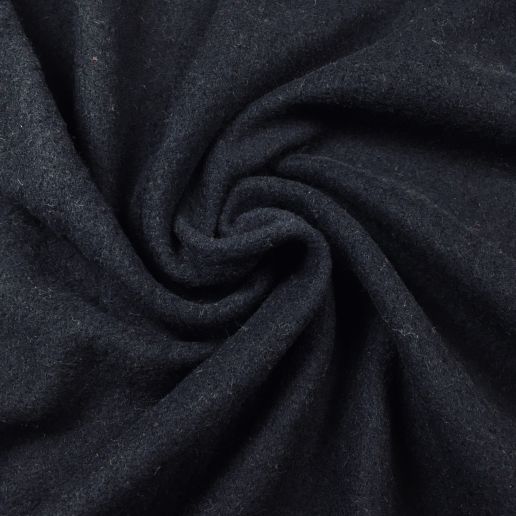
- Categories: GOTS, Organic/Natural
- Composition: 100% kbT Wool
- Weigth: 220 g/sqm
- Uses: Apparel, Fleece, Wool fabrics
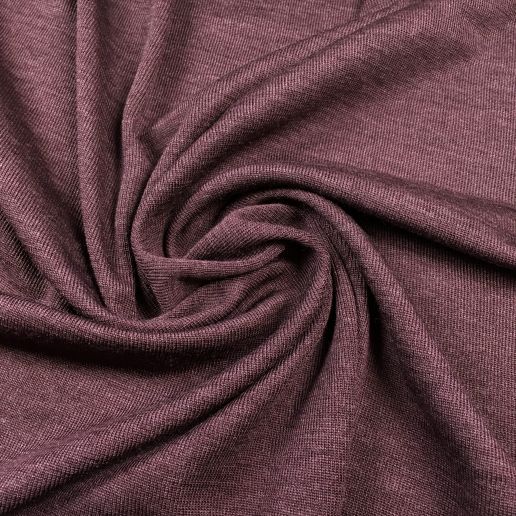
- Categories: GOTS, Organic/Natural
- Composition: 70% kbT Wool, 30% Silk
- Weigth: 180 g/sqm
- Uses: Apparel, Silk fabrics, Wool fabrics
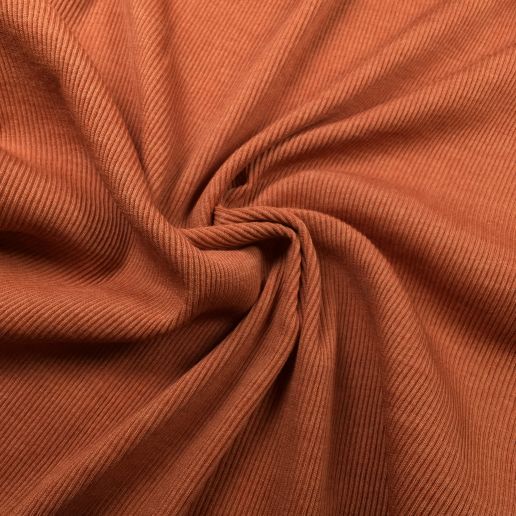
- Categories: GOTS, Organic/Natural
- Composition: 70% kbT Wool, 30% Silk
- Weigth: 180 g/sqm
- Uses: Apparel, Silk fabrics, Wool fabrics
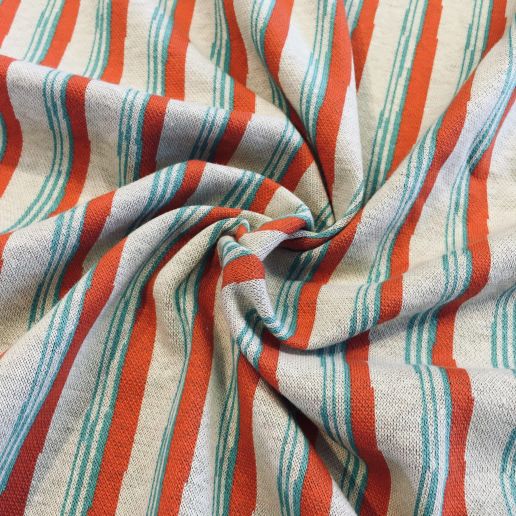
- Categories: GOTS, Organic/Natural
- Composition: 100% kbA Cotton
- Weigth: 250 g/sqm
- Uses: Apparel, Cotton fabrics, Jacquard
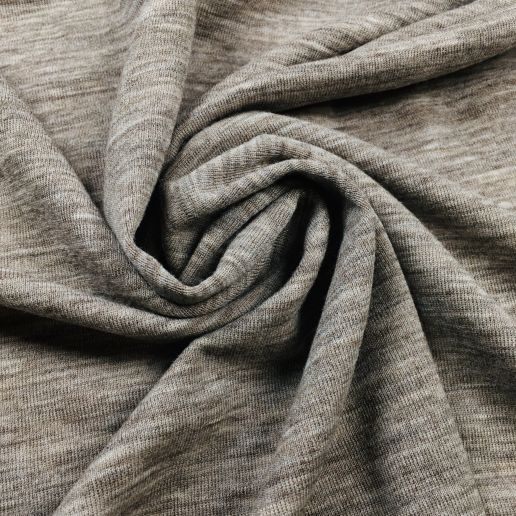
- Categories: GOTS, Organic/Natural
- Composition: 100% kbT Wool
- Weigth: 200 g/sqm
- Uses: Apparel
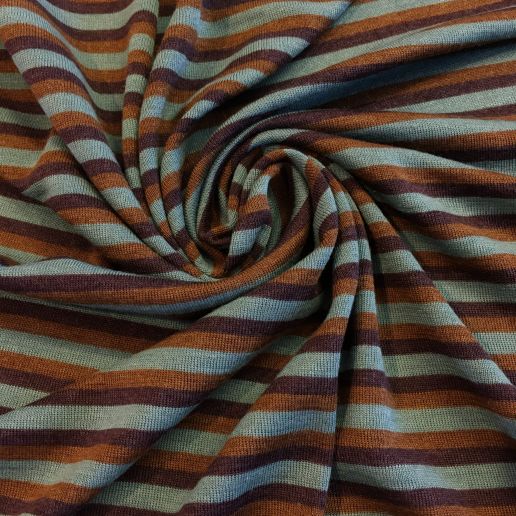
- Categories: GOTS, Organic/Natural
- Composition: 70% kbT Wool, 30% Silk
- Weigth: 180 g/sqm
- Uses: Apparel, Jersey fabrics, Wool fabrics
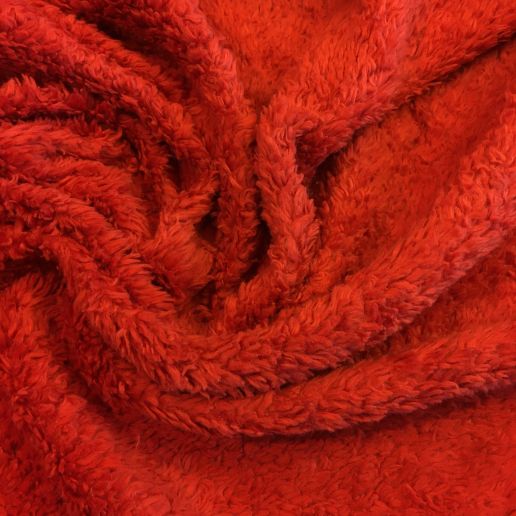
- Categories: GOTS, Organic/Natural
- Composition: 100% kbA Cotton
- Weigth: 380 g/sqm
- Uses: Apparel, Cotton, Plush & Teddy
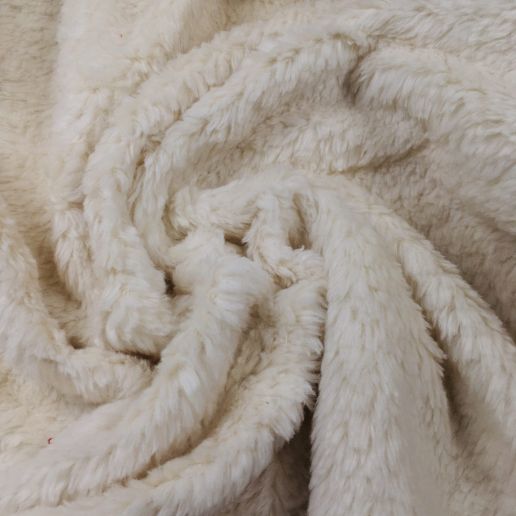
- Categories: GOTS, Organic/Natural
- Composition: 100% kbA Cotton
- Weigth: 380 g/sqm
- Uses: Apparel, Cotton fabrics, Plush & Teddy
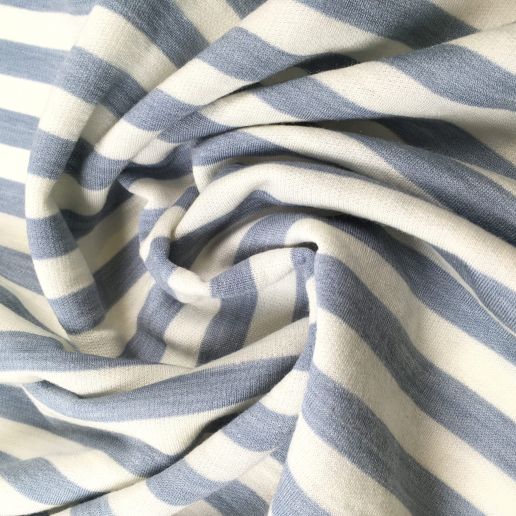
- Categories: GOTS, Regenerated Celulosics
- Composition: 70% kbT Wool, 30% Tencel®
- Weigth: 220 g/sqm
- Uses: Apparel, Regenerative Textiles, Wool fabrics
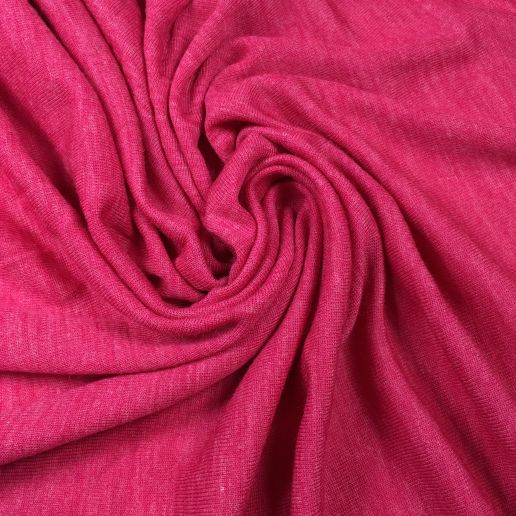
- Categories: GOTS, Regenerated Celulosics
- Composition: 70% kbT Wool, 30% Tencel®
- Weigth: 200 g/sqm
- Uses: Apparel, Jersey fabrics, Regenerative Textiles, Wool fabrics
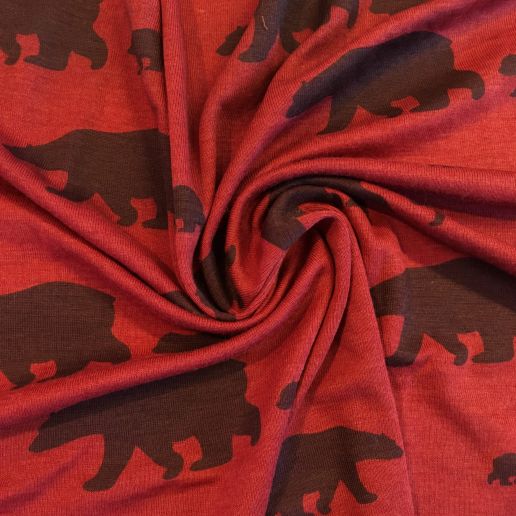
- Categories: GOTS, Organic/Natural
- Composition: 70% kbT Wool, 30% Silk
- Weigth: 180 g/sqm
- Uses: Apparel, Silk fabrics, Wool fabrics
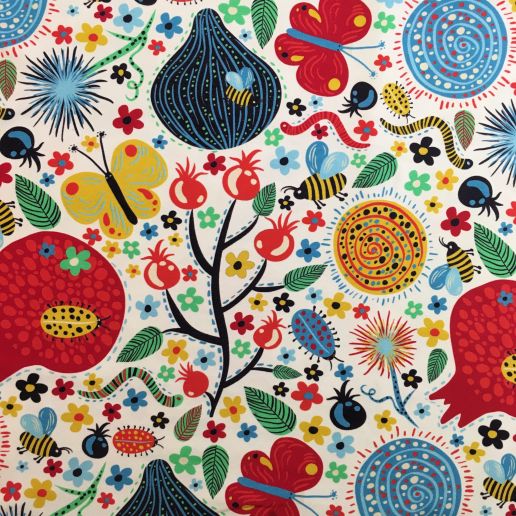
- Categories: GOTS, Organic/Natural
- Composition: 95% kbA Cotton, 5% Elastan
- Weigth: 200 g/sqm
- Speciality: Digital Druck
- Uses: Apparel, Cotton fabrics, Jersey fabrics
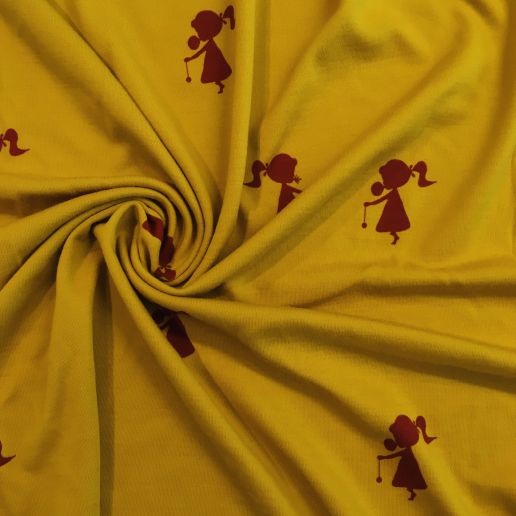
- Categories: GOTS, Organic/Natural
- Composition: 100% kbT Wolle
- Weigth: 220 g/sqm
- Uses: Apparel, Wool fabrics
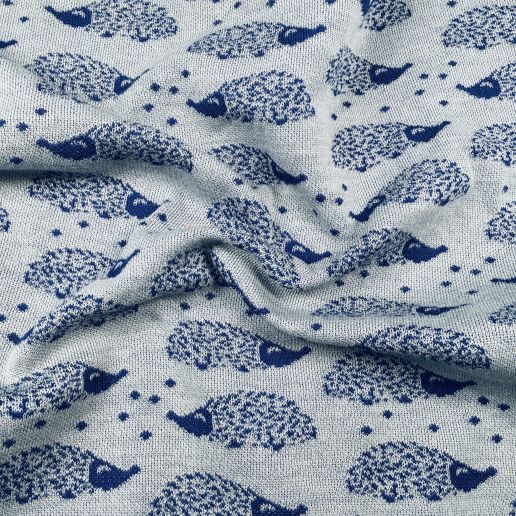
- Categories: GOTS, Organic/Natural
- Composition: 100% kbT Wolle
- Weigth: 220 g/sqm
- Uses: Apparel, Jacquard, Wool fabrics
————————————————————————–
Elissa Stampa
Turkish company Elissa Stampa bets on natural or recycled fabrics as well as regenerated textiles made of a cellulose based fibre produced in a closed cycle (at least 95%).
————————————————————————–
Sundag Heinrich
SUNDAGTEX by Heinrich Sundag stands for fashionable knitted fabrics in the field of natural textiles for 20 years already – qualities made of linen, hemp and kapok as well as blends of cotton with linen, hemp or nettle determine the collection.
————————————————————————–
Tejidos Royo
Spanish company Tejidos Royo is an expert in Spinning, Indigo Dyeing, Weaving, Piece dyeing & Special finishes. Their entire denim collection is dyed with DRYINDIGO and DRYBLACK. This means: ZERO WATER, reduction of chemical and engery usage.
————————————————————————–
Zeynar Mensucat
Zeynar Mensucat convinces with an annual production capacity of 4,680,000 kg (20% digital printing, 50% printing, 30% dyeing/washing). The lively and dynamic collection follows the philosophy of respect for nature using eco-friendly technologies.
- Categories: Regenerated Celulosics
- Composition: 5% Polyester, 90% Tencel®, 5% Elastan
- Weigth: 340 g/sqm
- Uses: Apparel, Jersey fabrics, Lenzing™ Technology
————————————————————————–
Enschede Textielstad by Annemieke Koster
Enschede Textielstad by Annemieke Koster
Until the 1970s, Enschede in the Netherlands, was one of Europe’s textile strongholds, along with Manchester. Then textile production gradually disappeared from the cityscape because it was much cheaper to produce clothes and textiles in low-wage countries. With this however, traceability, protection of workers and sustainability often fall by the wayside – which is why Enschede Textielstad was born out of Annemieke Koster’s desire to bring back transparency along the textile value chain and revive the city’s former traditions.
“I want to bring textiles back to Enschede and make it a city of textiles again – where professionals who still know the craftsmanship of yesteryear pull their knowledge and find innovative approaches. But then in a new, innovative collaboration.”
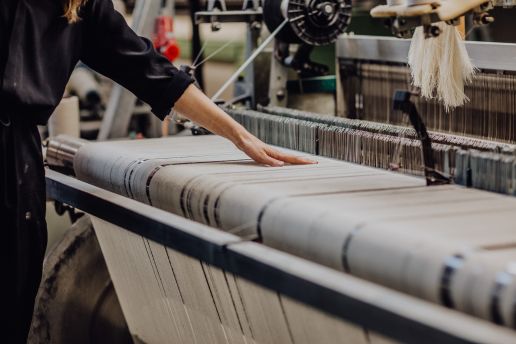
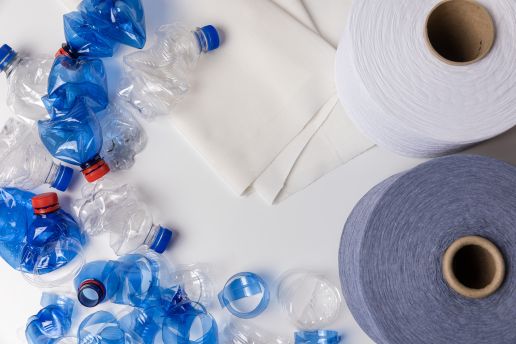
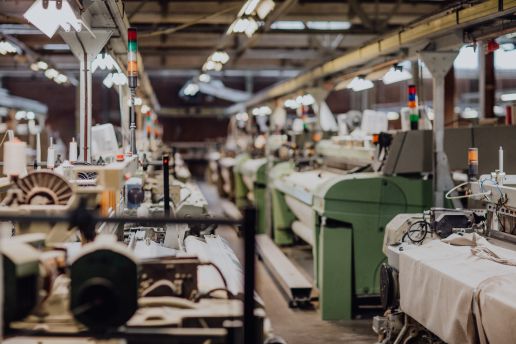
Local, natural, high quality: In the industrial weaving mill Enschede Textielstad, natural and as locally produced as possible yarns and fabrics for fashion and home textiles are created. The basis for this is formed by fair and environmentally friendly raw materials that are sourced exclusively from well-known suppliers: guaranteed Made in Europe – for shorter transportation routes and a smaller environmental footprint. Enschede Textielstad’s offers various options: Readymade fabrics produce bestsellers for direct purchase, Made To Order fabrics are woven but can be customised, or Custom Made fabrics for particularly individual ideas, new fabrics or for recycling product waste – so there is something to suit everyone.
The New Textiles Economy
The New Textiles Economy, A Catalyst for Transformation?
AN INDUSTRY INSIGHT BY FASHNERD FOUNDER MUCHANETA KAPFUNDE.
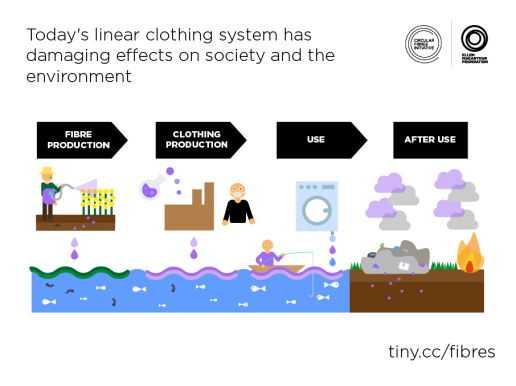
Although textile businesses play a fundamental part in the global economy, future-proofing this somewhat rigid industry with new technologies is no small feat. The good news is that cutting-edge innovations now have more authority than ever before. No longer labelled as gimmicky, these actionable tech solutions represent a real-life potential to change the textile world’s processes, materials, and techniques for the better. Which brings us to the question, how can one become an active shaper in the new textiles economy?
A New Mindset Speeds up Implementation
With the pandemic still dictating how we do business, new technologies have become unlikely superheroes. Bringing about a new mindset to the fashion and textile industry, new innovations have been encouraging companies to seize the opportunity to shift their trajectory towards a new textiles economy. But what is the new textiles economy?
Driving positive change during these challenging times, the new textile economy promises long-term benefits built on the reuse, remake, and recycle models. Based on circular economy principles, Ellen MacArthur Foundation’s paper called ‘A new textiles economy: Redesigning Fashion’s Future’, defines the new textile economy as “regenerative and restorative”. Designed to “phase out the use of non-renewable resources”, the new textiles economy can minimise the adverse impact by significantly reducing resource usage during the production, while in use, and after-use phases.
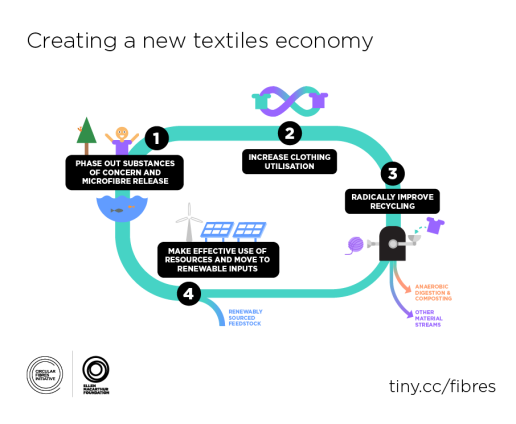
An excellent example of a company speeding up implementation with a new mindset is Nike. Committed to phasing out non-renewable resources, Nike adopted the ‘Rewire’ approach, which is a supply-chain strategy based on “integration, incentives, and innovation”. It was a change that helped Nike propel sustainability to the forefront of their business strategy.
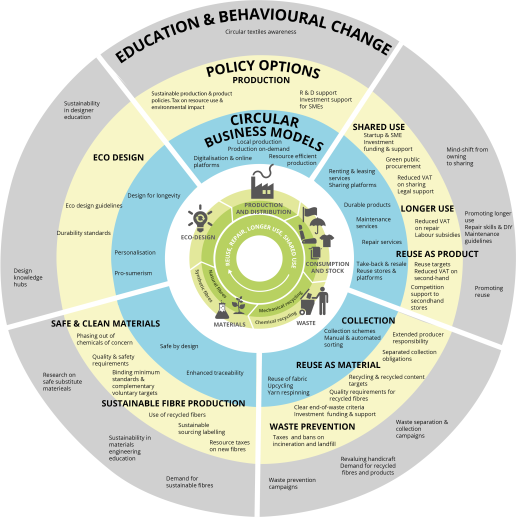
A Shared Vision Sets New Industry Standards
As the new textiles economy ushers in a different system level, a shared vision is emerging. Encouraging rapid acceleration within the textiles industry, the shared vision represents an opportunity for textile businesses to commit to disruptive partnerships that enable a more effective system-wide progress. Collaborations have not only been playing a vital role in stimulating strategies, but they have also made it possible for textile businesses to test new models at scale.
Setting new industry standards are companies like Reverse Resources. Described as the Uber of textile waste, Reverse Resources is a tracking and trading platform for textile waste that brings manufacturers and buyers together. Providing 360-degree transparency of the waste flows, Reverse Resources is one of many innovative companies taking critical action in supporting the new textiles economy by being an active shaper bringing about a systemic fix that supports structural change.
A Catalyst for Transformation?
Is the new textiles economy a catalyst for transformation? The answer is yes. The transformation of the textile industry is steering businesses towards a new textiles economy that is economically and environmentally better for everyone. Built on a shared vision and fueled by new technologies, the new textiles economy is excitingly ushering in a long-overdue evolutionary change of the linear system, which has been ripe for disruption for a very long time.
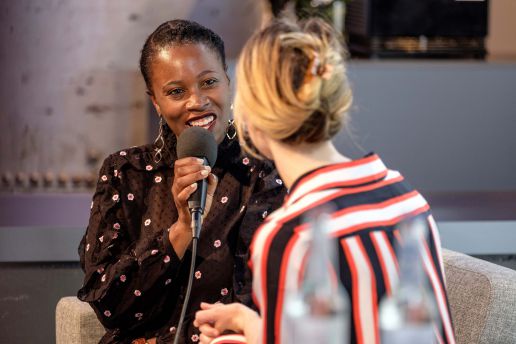
ABOUT THE AUTHOR
Founding editor-in-chief of FashNerd.com, Muchaneta has worked in the fashion industry for over 14 years. She is currently one of the leading influencers speaking and writing about the merger of fashion with technology and wearable technology.
Muchaneta Kapfunde | editor@fashnerd.com
Chiengora instead of Angora
Yarnsustain by Ann Cathrin Schönrock & Franziska Uhl
Often, solutions for ethical and sustainable are not used, even when they are the most obvious one. Fashion and knitwear designer Ann Cathrin Schönrock and textile engineer Franziska Uhl have searched the market in vain for sustainable and at the same time high-quality yarns which led the duo to get creative themselves: They founded the company Yarnsustain to revolutionise the fashion and textile industry with yarns and fabrics made from dog hair.
“The wool industry currently imports high-quality fibers from around the world, while the source is often walking directly in front of our faces. With us making this resource available to the textile industry, we are able to correct this systemic error. Pet-based high quality wool enables everyone out there to contribute to a better textile future.“
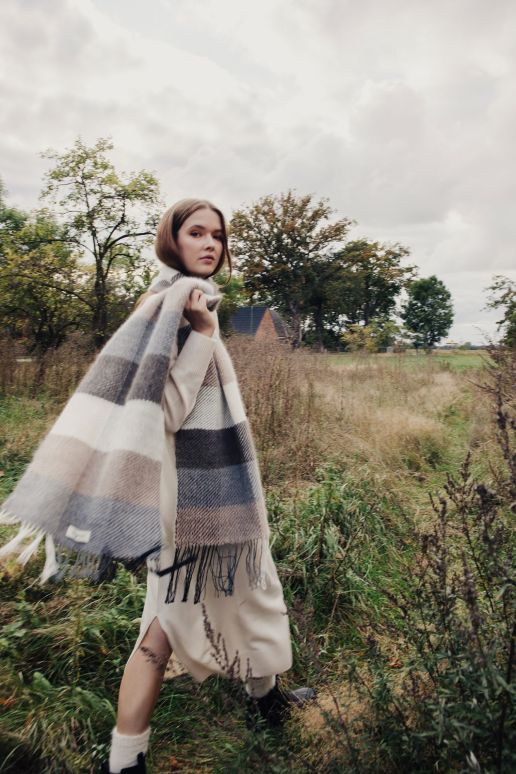
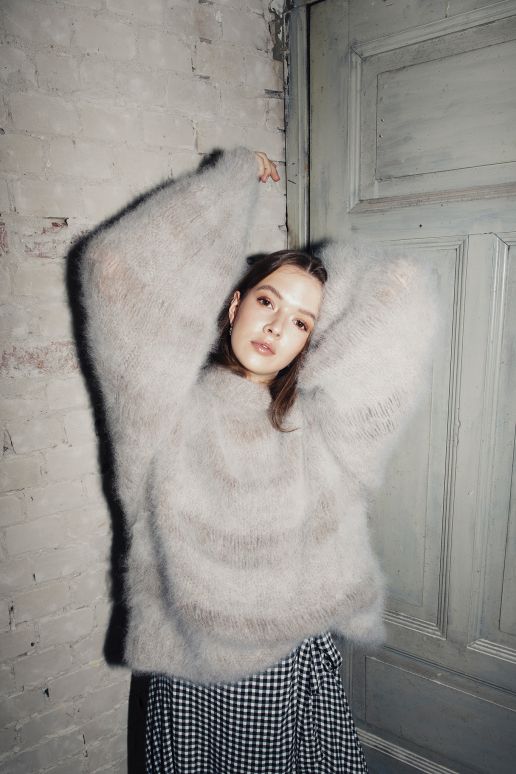
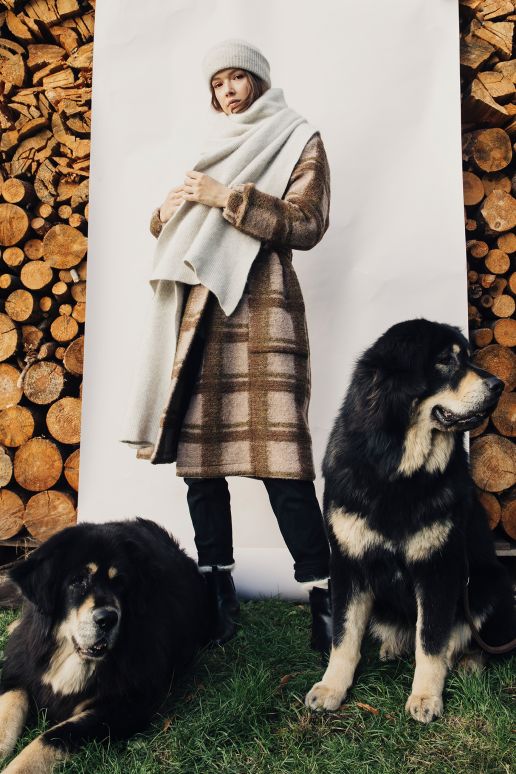
Back in 2017, Ann Cathrin Schönrock, who is a dog owner herself, started working with her dog’s wool – because why shouldn’t this material, which is actually considered waste, also be used for clothing or to fill home textiles? Together with her co-founder Franziska Uhl, she developed the high-quality Chiengora®, a yarn made from the undercoat of long-haired dogs. Support by funds from the German government, the organisation was able to collect more than two tonnes of undercoat this year alone and process it into yarn.
Behind the company are the NGO Saving Lost Resources e.V., Yarnsustain and the brand company modus intarsia. In this triad, the founders contribute to animal welfare, produce high-quality yarns and sell garments made from dog hair – to further promote consumer acceptance and establish garments made from dog hair on the market.
C&A opens sustainable production site in Mönchengladbach
Fashion retailer C&A has announced the opening of its Factory for Innovation in Textiles (“C&A’s FIT”) in Mönchengladbach, Germany, set for autumn 2021. The state-of-the-art production site will initially focus on manufacturing jeans using the latest digital technologies in a carbon-neutral production site. We got exclusive insights into the automation of C&A’s FIT and can’t wait to share it with you!
The German fashion company is working with scientists from Niederrhein University of Applied Sciences, the North Rhine-Westphalia Textile Academy and RWTH Aachen University, as well as pioneering start-up companies, on the new development.
FIT will first focus on the production of jeans. The ambitious plan is to initially produce around 400,000 jeans per year in Mönchengladbach, and later it will be 800,000. The first jeans will be available in stores in 2022.
With this opening, C&A is generating new impulses for the textile industry in the middle of Europe. Besides, it makes the bold statement that sustainable fashion must not be a niche product – which is why this manufacturing site is about production in larger numbers.
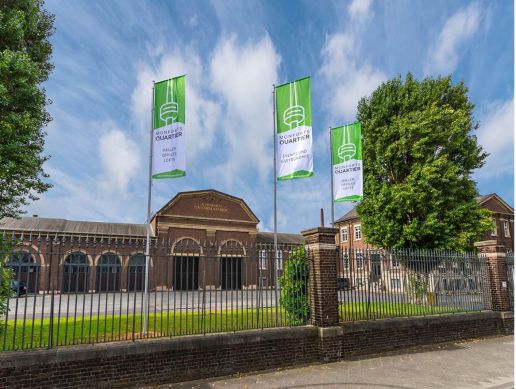
Betty Kieß, Head of Corporate Communications Europe C&A, exclusively shares with us some examples of automation used at C&A’s FIT:
- Fully automated pocket setter: A machine that automatically folds and sews the back pocket while the employee only inserts the fabrics.
- Automatic magazine: In the area of warehousing of raw materials, a magazine which automatically stores the materials and returns them to production when required is used. All materials are also digitally inventoried.
- Industry 4.0: All machines are designed for Industry 4.0 and can communicate production data with one another.
- Decorative stitch carousel: The decorative seam is automatically sewn onto the back pocket by a stitch carousel.
Betty Kieß also tells us that they are working closely with the universities in the field of robotics with the goal of eventually using robots to feed parts into the production.
…definitely exciting news coming soon!
As a long-standing visitor to MUNICH FABRIC START and BLUEZONE, C&A will of course be back in Munich in autumn to view and order the collections and innovations of our international exhibitors – we can hardly wait to greet our visitors and exhibitors again at our physical fair under the motto RISE allowed to!
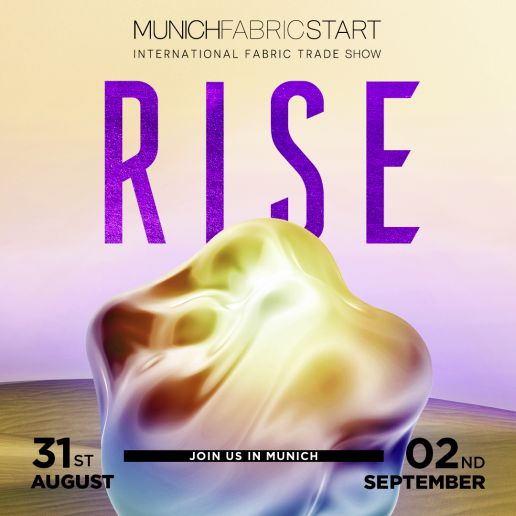
MUNICH FABRIC START
31/08 – 02/09/2021

BLUEZONE
31/08 – 01/09/2021
From Trash to Treasure by Youyang Song
Dutchman Simon Angel has found a talented designer whose innovation makes it possible to create textiles from recycled bioplastics. The curator of SUSTAINABLE INNOVATIONS presented these and three other developments during the FABRIC DAYS.
„More and more, we are moving towards an era of adhocracy. Transferring this into the material and textile world: Materiality and comfort will experience a comeback”, explains Simon Angle in our interview with him.
An example of this is presented here as part of the SUSTAINABLE INNOVATIONS:
FROM TRASH TO TREASURE BY YOUYANG SONG
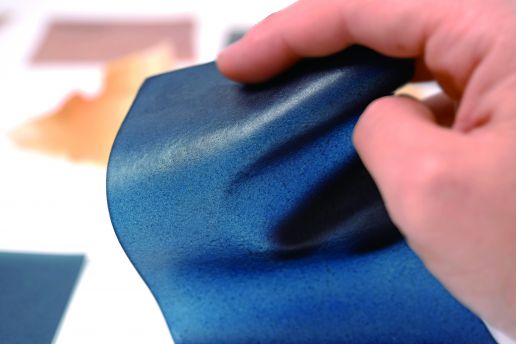
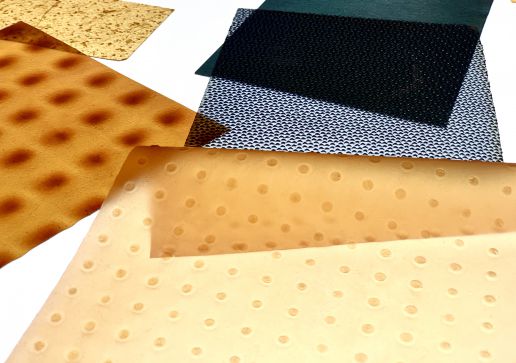
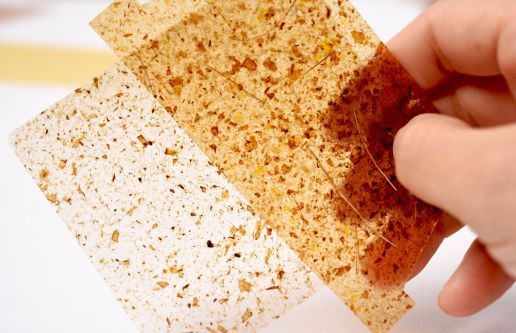
How can innovative products be created without using new resources? How can we stop growing mountains of waste? Use the old to create the new: The designer and materials researcher Youyang Song has set herself the goal of helping to develop an ecosystem consisting of purely biodegradable materials. Handbags made of banana peel, lampshades made of soy milk – the designer processes organic waste into new recyclable materials. This results in products that can be returned to the natural cycle at the end of the product life cycle.
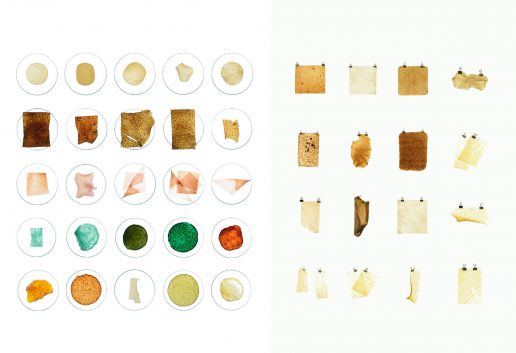
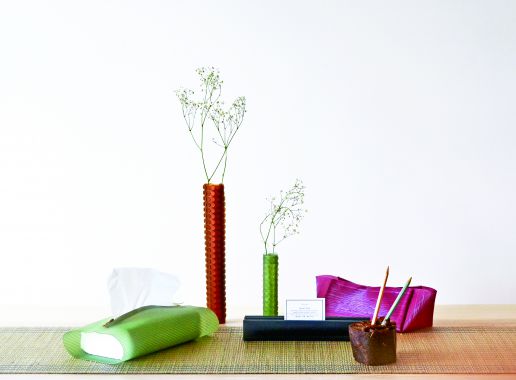
„Our goal is to establish a circular economy regarding the materials and follow the sustainable development guidelines to create our products.“
Youyang Song
Song has developed the “Cooking new materials” technique, in which fruit peels or soy milk are mixed with a natural binding agent. “APeel” is the name of the soft, innovative material created by this process. The natural product is also waterproof and robust like real leather, smells fruity, has a natural texture and is completely biodegradable. Protecting the environment in style: With her project, Song wants to show that environmentally friendly products can be not only practical, but also aesthetic and stylish.
